Waterwall tubes
Waterwall tubes are integral components of a boiler's waterwall, forming the furnace walls where heat from the combustion process is transferred to the water inside the tubes.
High-pressure boiler tubes are designed for use in boilers where steam or water is produced under high pressure.
Download PDFThese tubes absorb heat, converting water into steam, which is then used to generate power. Waterwall tubes are made from high-strength materials to withstand extreme temperatures and pressures. They are crucial for the boiler's efficiency, providing thermal insulation and protecting the furnace from heat damage. These tubes are commonly used in power plants and industrial boilers.
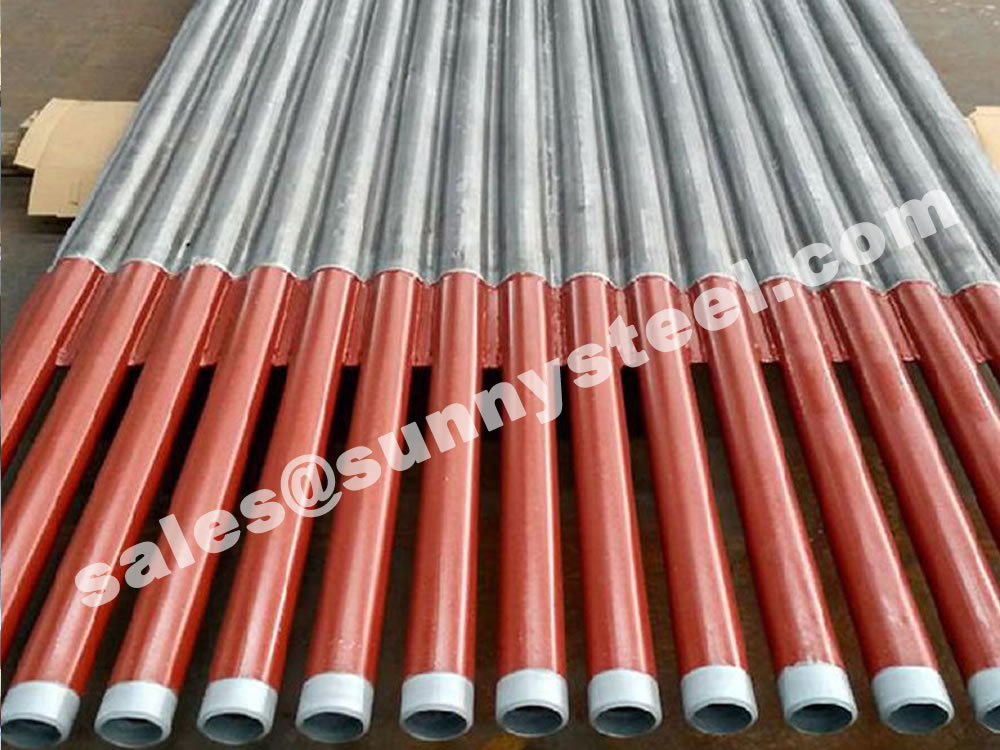
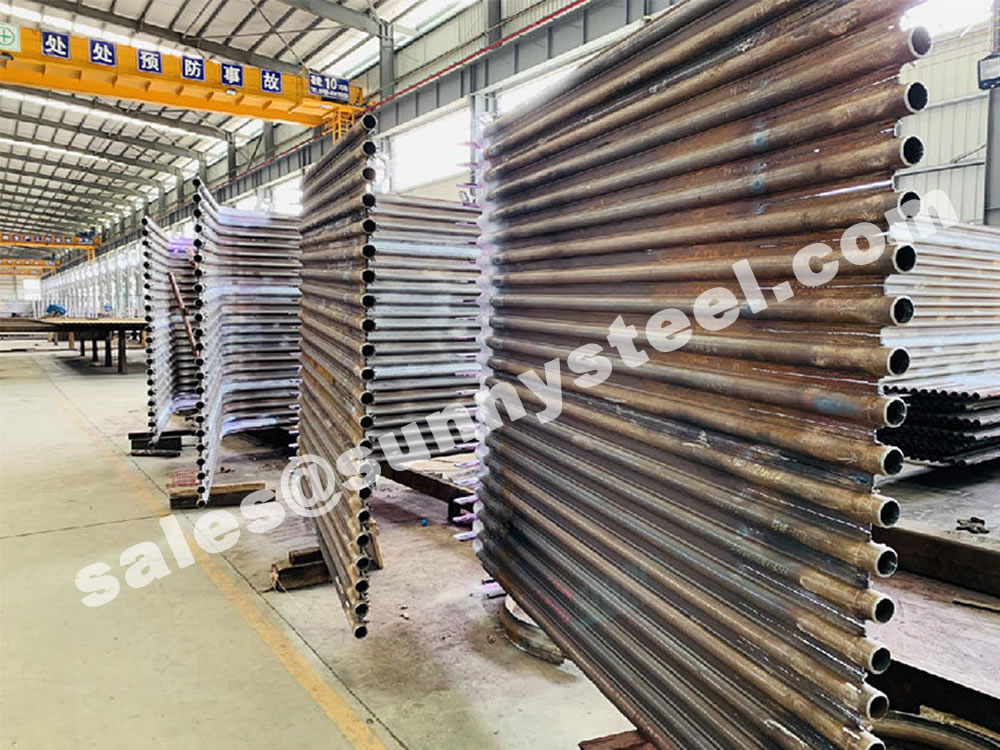
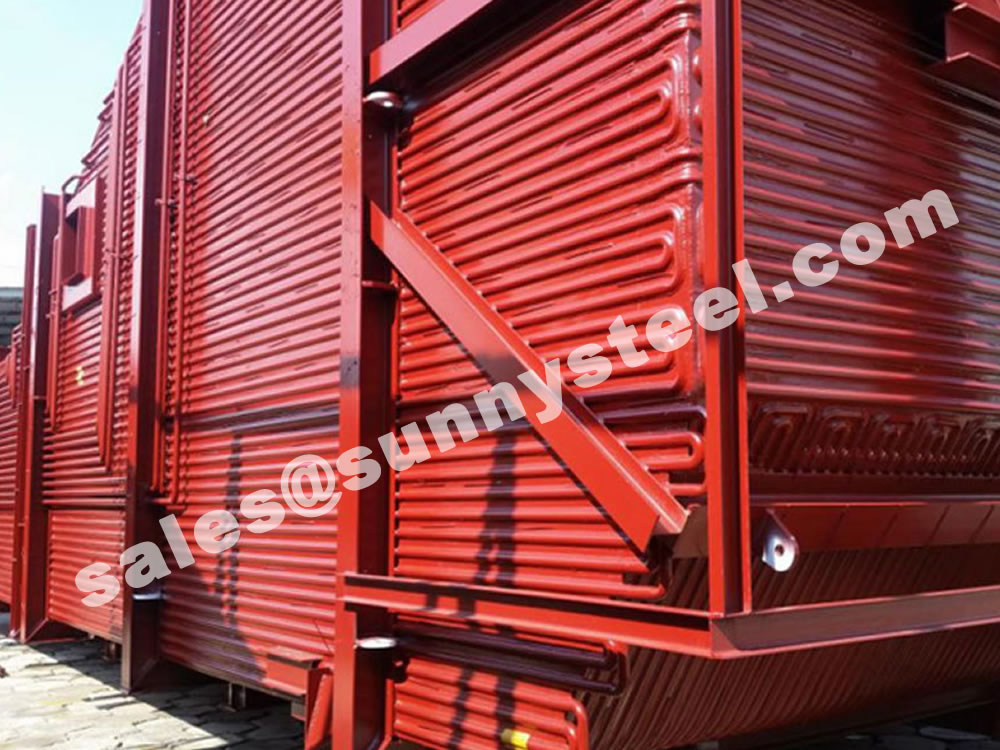
Superheater and reheater of high pressure boilers operate under the most severe conditions. The tubes must meet the requirements of both creep strength and endurance strength while providing resistance to flue gas corrosion and fly ash erosion on the outer wall of the tubes, and resistance to steam oxidation on the inner wall, as well as good processing property and weldability.
In cases of boilers fired by low sulfur coal, from the perspective of creep strength, T91 tubes are suitable for superheater and reheater in SC and USC boilers when the tube wall temperature is ≤600°C. When the tube wall temperature is ≤620°C, T92, T122, and E911 tubes can be used. When the wall temperature is ≤650°C, NF12 and SAVE12 tubes can be used.
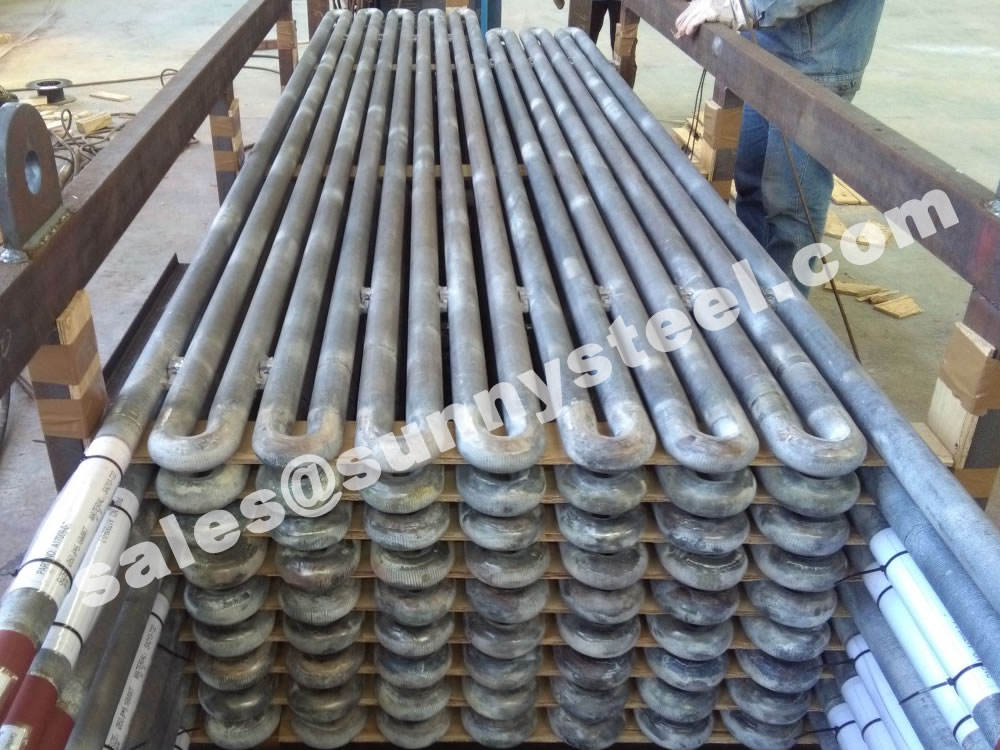
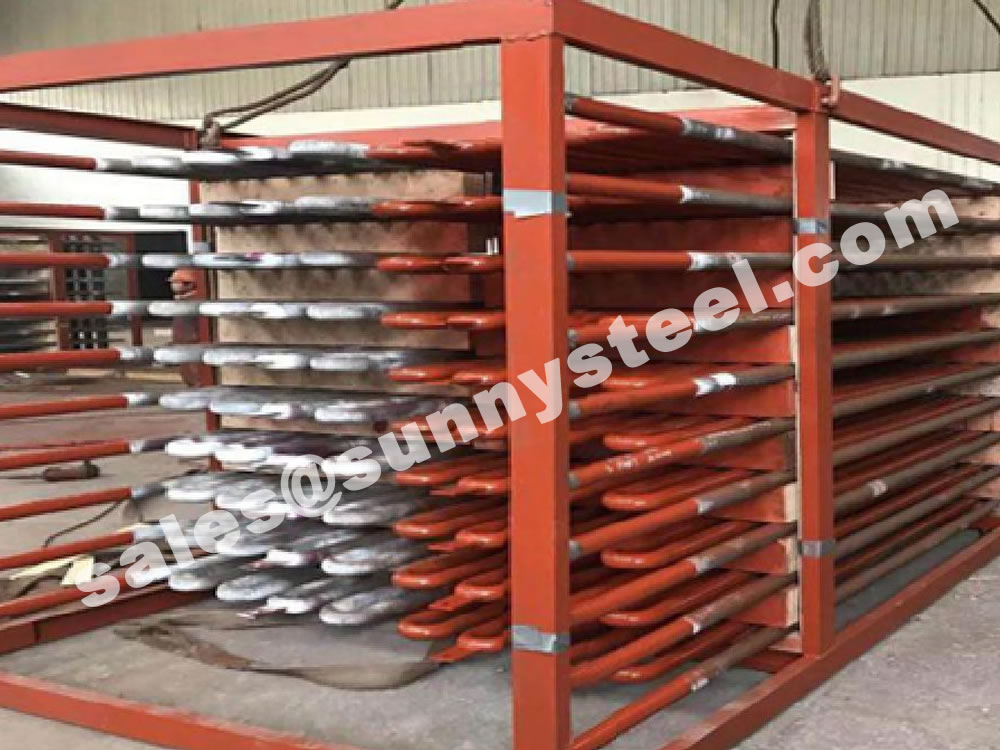
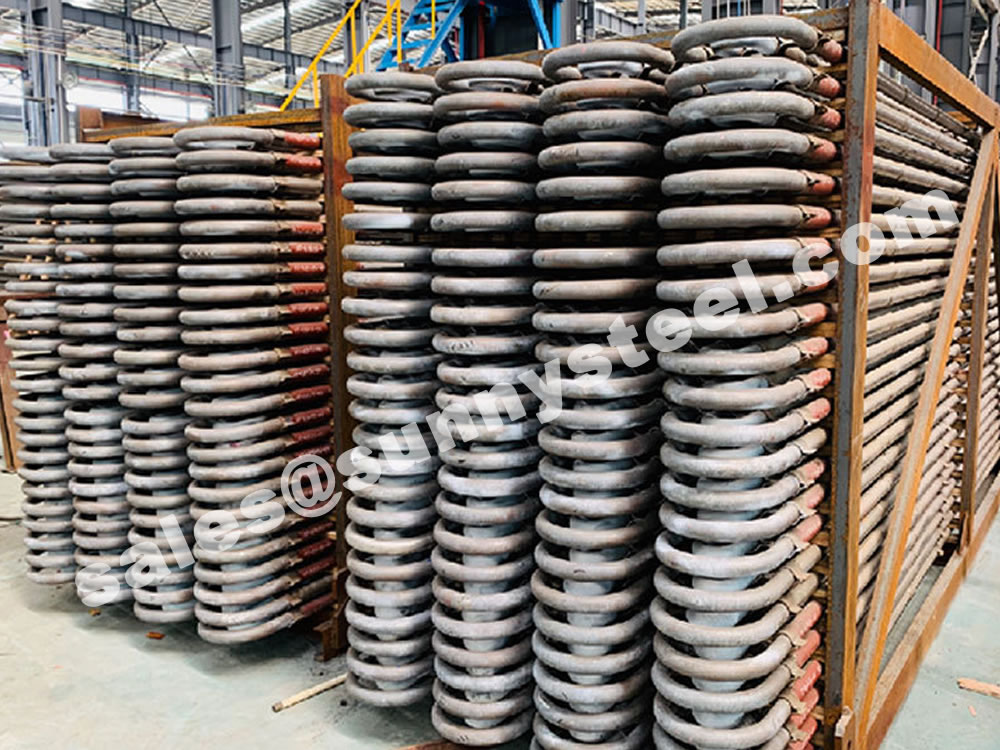
In cases of boilers fired by high sulfur coal, when the tube wall temperature is ≥600°C (steam temperature ≥566°C), austenitic heat-resistant steel such as TP304H, TP321H, TP316H, and TP347H should be selected for superheater and reheater tubes.
We specialise in offering automatic weld overlay process for boiler corrosion and erosion protection, which can help operators or owners of power plants to reduce high maintenance costs. Good solution to replace tube shields for critical boiler components such as superheater/reheater/economiser, corrosion and erosion protection.
Superheater tubes are used in boilers to raise the temperature of steam beyond its saturation point, producing superheated steam. This superheated steam is then directed to steam turbines, improving the overall efficiency of power generation systems. These tubes must withstand extremely high temperatures and pressures, requiring materials that offer exceptional heat resistance and durability.
Reheater tubes are used to reheat steam that has passed through the turbine, restoring its energy for further use in the turbine. This reheating process enhances the efficiency of power generation by ensuring that the steam maintains sufficient energy for subsequent stages of power production. Like superheater tubes, reheater tubes are made from materials that can endure high temperatures and pressures.
High pressure boiler tubes are typically made from high-strength materials like carbon steel or alloy steel to withstand extreme temperatures and pressures. They are used in power plants, industrial boilers, and steam generators. The tubes are essential for the safe and efficient operation of high-pressure systems, as they prevent leakage and maintain the integrity of the boiler. Their quality and specifications must adhere to strict industry standards, such as ASTM and ASME.
| Type | Specification (mm) | Steel Grade/Number | Standard | Typical Application |
|---|---|---|---|---|
| Low-Medium Pressure Boiler Tubes | O.D.:38–720 W.T.: 3.5–120 |
10 20 |
GB 3087 | Low-Medium pressure boiler heating pipes, headers, steam pipes |
| High-Medium Pressure Boiler Tubes | 20G 20MnG 25MnG 15MoG 12CrMoG 15CrMoG 12Cr2MoG 12Cr1MoVG 10Cr9Mo1VNbN 15Ni1MnMoNbCu |
GB 5310 | Used for working pressures exceeding 9.8 MPa and temperatures between 450–650°C, including headers, collectors, and steam pipes | |
| SA106A/B/C SA192 T1/T1a SA210A-1/C T/P2 T/P11 T/P12 T/P22 T23 T24 T/P91 T/P36 |
ASME SA106 ASME SA192 ASME SA209 ASME SA210 ASME SA213 ASME SA335 |
|||
| P195GH/P235GH/P265GH 16Mo3 13CrMo4-5 10CrMo9-10 15NiCuMoNb5-6-4 P355N |
EN 10216 | |||
| St35.8/St45.8 15Mo3 13CrMo44 10CrMo910 |
DIN 17175 |
The major way to improve power generation efficiency is to increase steam pressure and temperature in thermal power plant. Below is a table for relation between steam parameter, efficiency and coal consumption.
| Power generation unit | Steam pressure (MPa) | Steam temperature (°C) | Boiler efficiency (%) | Coal consumption (g/kW*h) |
|---|---|---|---|---|
| Medium pressure | 3.5 | 435 | 27 | 460 |
| High pressure | 9.0 | 510 | 33 | 390 |
| Ultra-high pressure | 13.0 | 535/535 | 35 | 360 |
| Subcritical | 17.0 | 540/540 | 38 | 324 |
| Supercritical | 25.0 | 567/567 | 41 | 300 |
| Ultra-supercritical | 30.0 | 600/600/600 | 48 | 256 |
From the above table, it can be seen that as steam pressure and temperature increase, power generation efficiency increases significantly while coal consumption decreases significantly. The technical challenge in improving steam parameters is the pressure and temperature resistance of boiler tubes. Pressure parts such as water wall, superheater, reheater, steam header and piping, which operate under harsh conditions, are our main concern in selecting suitable boiler tubes.

Steam header and pipeline tubes are vital components in steam distribution systems. The steam header collects steam from the boiler and distributes it through the pipeline tubes to various points of use. These tubes must withstand high pressures and temperatures, ensuring efficient and safe steam flow. Typically made from carbon steel, alloy steel, or stainless steel, these tubes are designed to prevent steam leakage and maintain system integrity, making them essential in power plants, refineries, and industrial boilers.
As the steam headers and piping are not exposed to flue gas, their wall temperature is close to the steam temperature. This requires that the steel used has sufficient creep strength, fatigue strength, steam oxidation resistance, good workability and weldability.
Due to the low coefficient of thermal expansion and high thermal conductivity of ferritic refractory steels, they will not cause severe fatigue damage to the header and piping under high start-up and shut-down rates. Therefore, ferritic refractory tubes are the preferred materials.
For steam headers and piping of SC and USC boilers, P91 tubes can be selected when the tube wall temperature is ≤600°C. When the temperature is ≤620°C, P92, P122 and E911 tubes can be used. If the temperature is ≤650°C, NF12 and SAVE12 tubes can be selected.
The ASME SA213 T22 and SA335 P22, along with the 12Cr2MoG tube, are materials used in high-temperature applications, such as power plants and petrochemical industries.
ASME SA213 T91 and ASME SA335 P91 are both types of alloy steel tubes designed for high-temperature and high-pressure applications, such as in power generation and petrochemical industries.
T91 (P91) is a ferritic heat-resistant alloy steel pipe developed on the basis of T9 (9Cr-1Mo) with the addition of 0.030-0.070% N, 0.18-0.25% V, 0.06-0.10% Nb. 9% Cr content makes its oxidation resistance, corrosion resistance, high temperature strength and non-graphitisation tendency better than low alloy steel. 1% Mo content is to improve the high temperature strength and reduce the hot shortness of Cr steel. Compared with T9 pipe, it has better weldability and thermal fatigue performance, 3 times the fatigue strength under 600°C, and retains its excellent high temperature resistance. Compared with TP304 austenitic stainless steel, it has small expansion coefficient, good thermal conductivity and fatigue strength. It is mainly used for superheater and reheater working under 650°C.
High-pressure boiler tubes are designed to withstand high temperatures and pressures, making them essential in power generation and industrial applications. The materials used for high pressure boiler tubes are carefully selected based on their ability to resist creep, corrosion and oxidation while maintaining strength at elevated temperatures. Here are some of the more common materials used in high pressure boiler tubes.
Carbon steel is a basic material used in boiler tubes. It offers good strength and moderate corrosion resistance at temperatures up to about 1000°F (540°C).
Applications: Suitable for low to medium pressure applications. Used where operating temperature is below 800°F (427°C) for rimmed steel and below 1000°F (540°C) for killed steel.
Carbon-molybdenum steels typically contain about 0.5% molybdenum, which improves creep strength and corrosion resistance compared to plain carbon steels.
Applications: Commonly used in high temperature, high pressure environments such as superheaters and reheaters. It can withstand temperatures up to 1000°F (540°C).
These steels contain small amounts of chromium (up to 2.25%) and molybdenum (up to 1%), which increase their strength, creep resistance and resistance to oxidation at high temperatures.
Applications: Commonly used in high pressure boilers, withstanding temperatures up to 1200°F (650°C). T11 and T12 are suitable for slightly lower temperature applications while T22 is used at higher temperatures due to its superior creep strength.
High alloy steels such as T9 and T91 contain higher levels of chromium (up to 9%) and molybdenum (up to 1%), providing excellent corrosion and oxidation resistance, as well as high creep strength.
Applications: Used in superheaters, reheaters and other components in high pressure boilers operating at temperatures up to 1200°F (650°C).
Austenitic stainless steels, such as T304 and T316, offer excellent corrosion and oxidation resistance, high strength and good ductility. These materials can operate at higher temperatures without losing their mechanical properties.
Applications: Ideal for high pressure and high temperature environments, particularly where corrosion resistance is critical. Used in superheaters and reheaters with temperature limits depending on the specific grade, typically up to 900°C (1650°F).
These are nickel based alloys designed for extreme conditions. They offer exceptional strength, creep resistance and corrosion resistance at temperatures exceeding those of conventional steels.
Applications: Used in the most demanding environments within high pressure boilers, including supercritical and ultra-supercritical boilers, where temperatures can reach up to 1800°F (980°C).
The choice of material for high pressure boiler tubes depends on the specific operating conditions, including temperature, pressure and the presence of corrosive environments. Carbon steels and carbon-molybdenum steels are suitable for moderate conditions, while low- and high-alloy steels, stainless steels and superalloys are used for more demanding applications. Proper material selection is essential to ensure the safety, efficiency and longevity of high pressure boilers.
The physical properties of high pressure boiler tubes are critical for its performance in high-temperature and high-pressure applications.
| Standard | Grade | Tensile strength (MPa) | Yield strength (MPa) | Elongation (%) | Hardness |
|---|---|---|---|---|---|
| GB5310 | 20G | 410~550 | ≥245 | ≥24 | -- |
| 20MnG | ≥415 | ≥240 | ≥20 | -- | |
| 25MnG | ≥485 | ≥275 | ≥24 | -- | |
| 15CrMoG | 440~640 | ≥235 | ≥22 | -- | |
| 12Cr2MoG | 450~600 | ≥280 | ≥20 | -- | |
| 12Cr1MoVG | 470~640 | ≥255 | ≥21 | -- | |
| 12Cr2MoWVTiB | 540~735 | ≥345 | ≥18 | -- | |
| 10Cr9Mo1VNb | ≥585 | ≥415 | ≥20 | -- | |
| ASME SA210 | SA210A-1 | ≥415 | ≥255 | ≥30 | ≤143HB |
| SA210C | ≥485 | ≥275 | ≥30 | ≤179HB | |
| ASME SA213 | SA213 T11 | ≥415 | ≥205 | ≥30 | ≤163HB |
| SA213 T12 | ≥415 | ≥220 | ≥30 | ≤163HB | |
| SA213 T22 | ≥415 | ≥205 | ≥30 | ≤163HB | |
| SA213 T23 | ≥510 | ≥400 | ≥20 | ≤220HB | |
| SA213 T91 | ≥585 | ≥415 | ≥20 | ≤250HB | |
| SA213 T92 | ≥620 | ≥440 | ≥20 | ≤250HB |
With years of expertise, we provide a diverse array of steel tube processing options. From sawing and machining tube blanks to intricate bending and upsetting operations, we actively assist you throughout your projects.
Our capabilities extend to eccentricity reduction and concentricity enhancement through turning and grinding. We excel in creating complex geometries using processes like rotary swaging and axial forming. Additionally, we offer property modifications via partial heat treatment, ensuring tailored solutions for your specific needs.
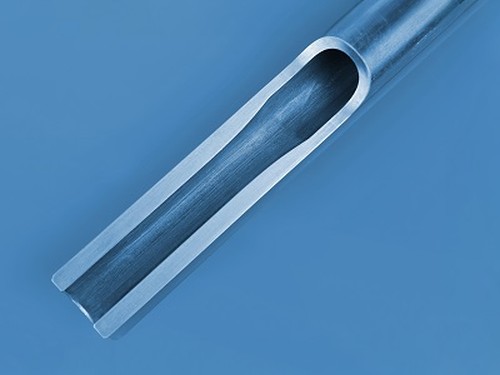
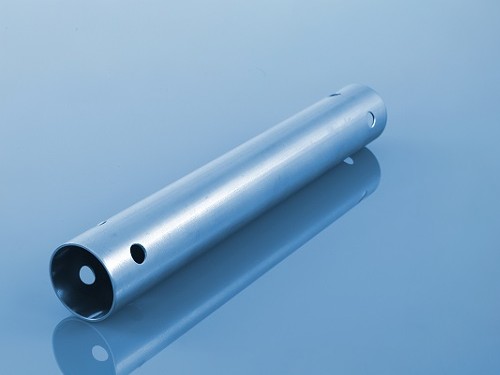
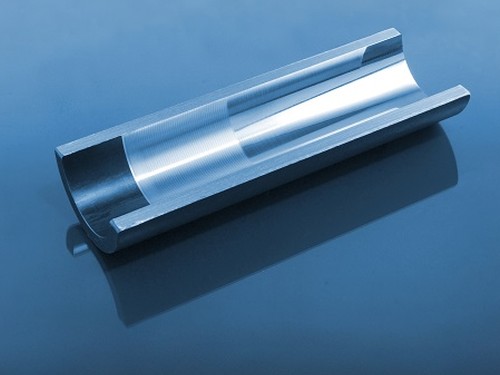
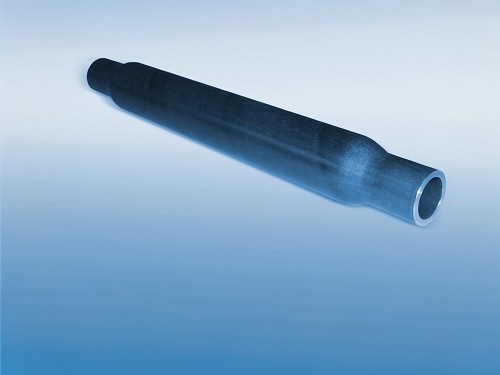
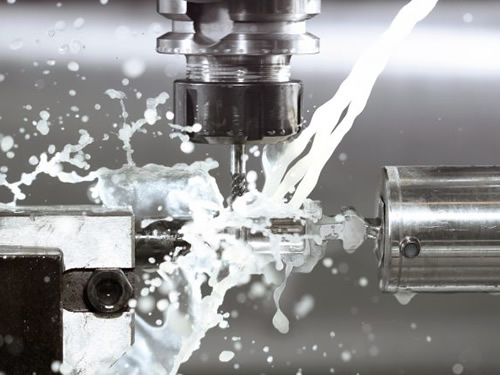
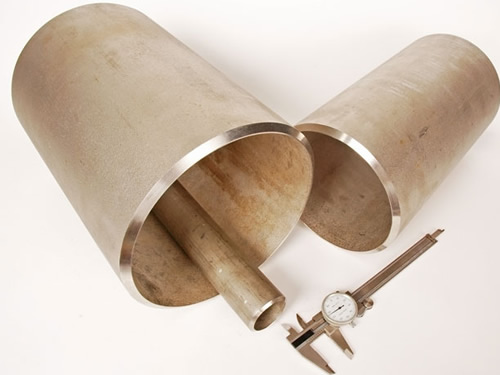
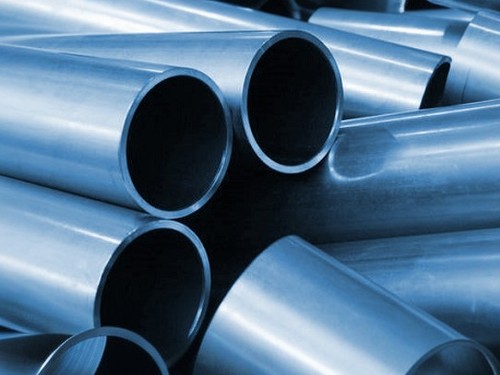
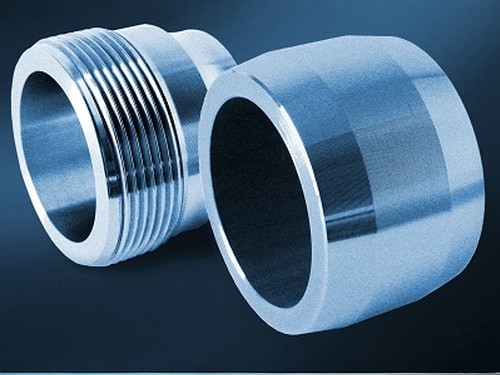
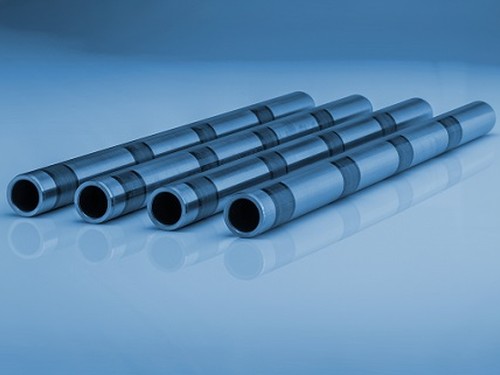
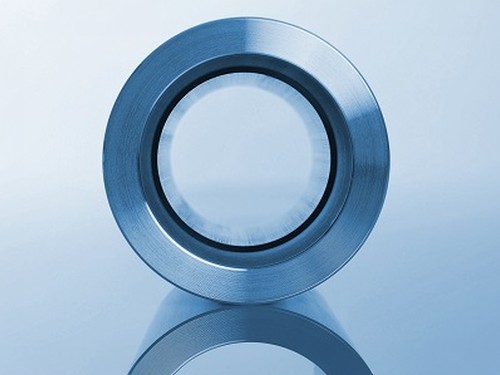
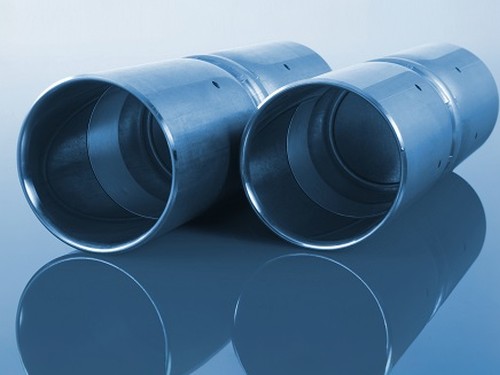
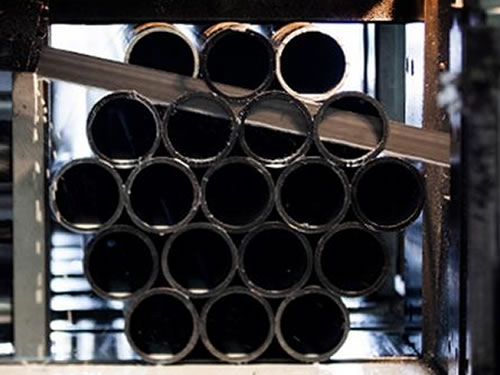
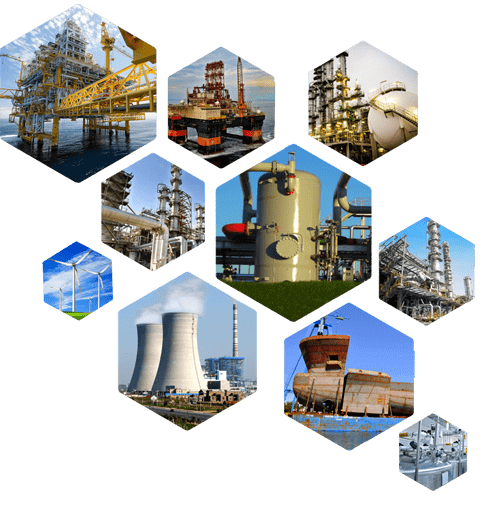
Alloy steel pipes are ideally suitable for chemical, petrochemicals, and other energy-related applications.
The alloy steel pipe adopts high quality carbon steel, alloy structural steel and stainless & heat resisting steel as raw material through hot rolling or cold drawn to be made.
Alloy steel can be used in process area where carbon steel has limitation such as
As an important element of steel products, alloy steel pipe can be divided into seamless steel pipe and welded steel pipe according to the manufacturing technique and tube billet shape.
Here you can see the common alloy steel grade that you will come across.
There are many kinds of materials used for transport in industrial production. Specifically we will have more choices and it is not limited to the use of alloy steel pipe. But even in the face of more choices, many people tend to choose alloy steel pipe. People make their own choices will have their own reasons. This means the alloy steel pipe application has its own advantages. Compared with transmission lines made of other materials, after it meets the basic application requirements, its quantity is lighter. Then in the practical application of alloy steel pipe, it will have more advantages because of this. Besides its physical characteristic advantage, it also has economic advantages. The wide application of alloy steel pipe is with kinds of reasons. So in practical usage, we can exploit the advantages to the full, in this way can we get more profits in these applications of alloy steel pipe.
The transportation of kinds of gases or liquids in production needs to rely on alloy steel pipe. This shows that the actual role of alloy steel pipe application is important. High temperature resistant and low temperature resistant is the tolerance of temperature. In the practical application of alloy steel pipe, there will be many materials need to be transported. However their temperatures are not the same. So this can be the basic requirement to alloy steel pipe. It needs more corrosion resistance. Corrosion resistant material is the best material during transporting, because it is corrosion resistant. So it can be used in more occasions. And it is definitely very convenient for users.
Can be 100% recycled, environmentally friendly, energy-saving, resource conservation, national strategy, national policy to encourage the expansion of the field of application of high-pressure alloy pipe. Of alloy steel pipe total consumption accounted steel in the proportion is only half of the developed countries, to expand the field of use of the alloy steel pipe to provide a wider space for the development of the industry. The future needs of the average annual growth of China’s high-pressure alloy steel pipe long products up to 10-12%.
Alloy Steel pipe contains substantial quantities of elements other than carbon such as nickel, chromium, silicon, manganese, tungsten, molybdenum, vanadium and limited amounts of other commonly accepted elements such as manganese, sulfur, silicon, and phosphorous.
Our team of experienced sales specialists proudly partners with gas and chemical processors, power generation plants, oil refineries, and related industries to offer piping components and value-added services.
The biggest advantages of alloy steel pipe can be 100% recycled, environmentally friendly, energy-saving, resource conservation, national strategy, national policy to encourage the expansion of the field of application of high-pressure alloy pipe. Of alloy tube total consumption accounted steel in the proportion is only half of the developed countries, to expand the field of use of the alloy tube to provide a wider space for the development of the industry. According to the Chinese Special Steel Association alloy pipe Branch Expert Group, the future needs of the average annual growth of China’s high-pressure alloy pipe long products up to 10-12%.
Chemical composition inspection, mechanical properties test(tensile strength,yield strength, elongation, flaring, flattening, bending, hardness, impact test), surface and dimension test,no-destructive test, hydrostatic test.
identification of the chemical composition of the metal used to manufacture the fitting. Uses PMI sensors, including X-ray fluorescence or optical emission spectrometry.
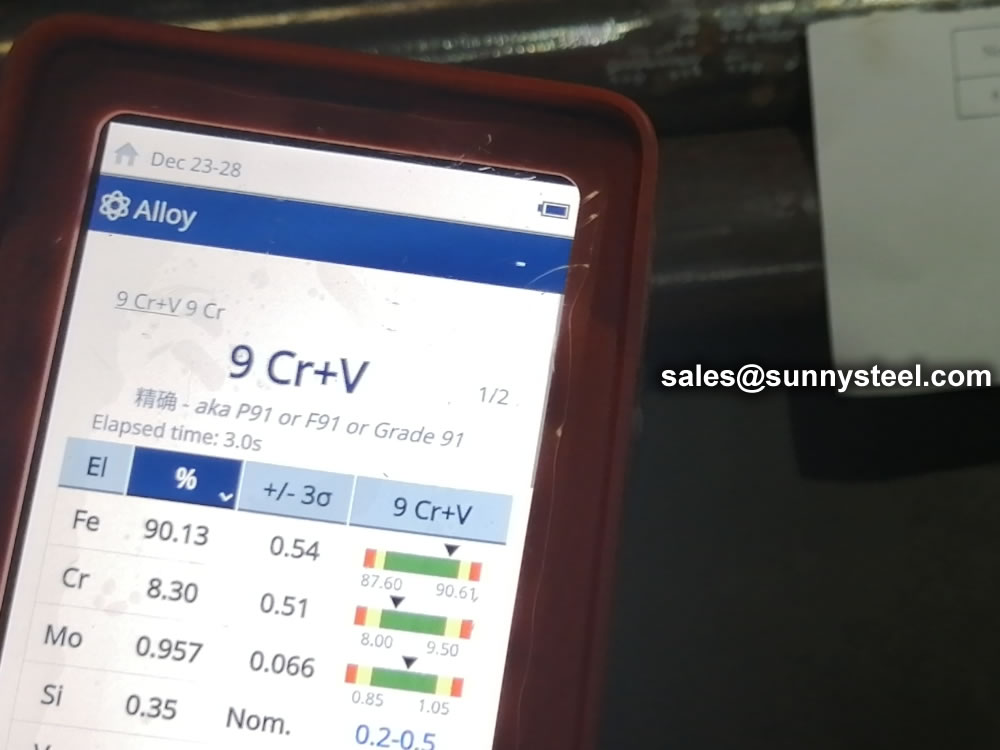
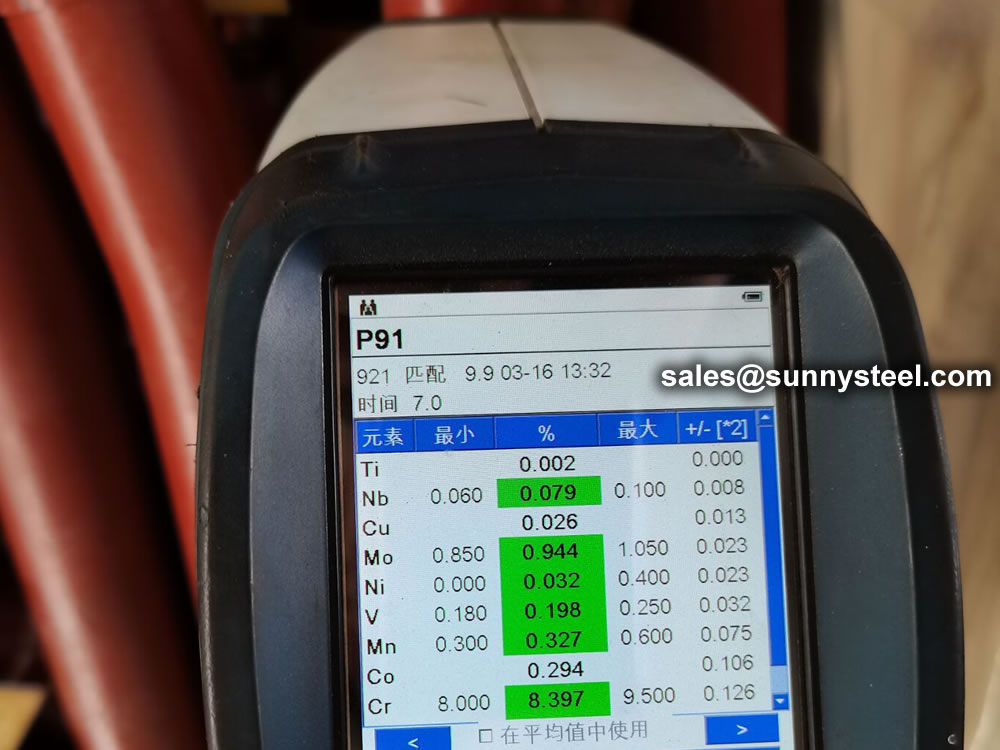
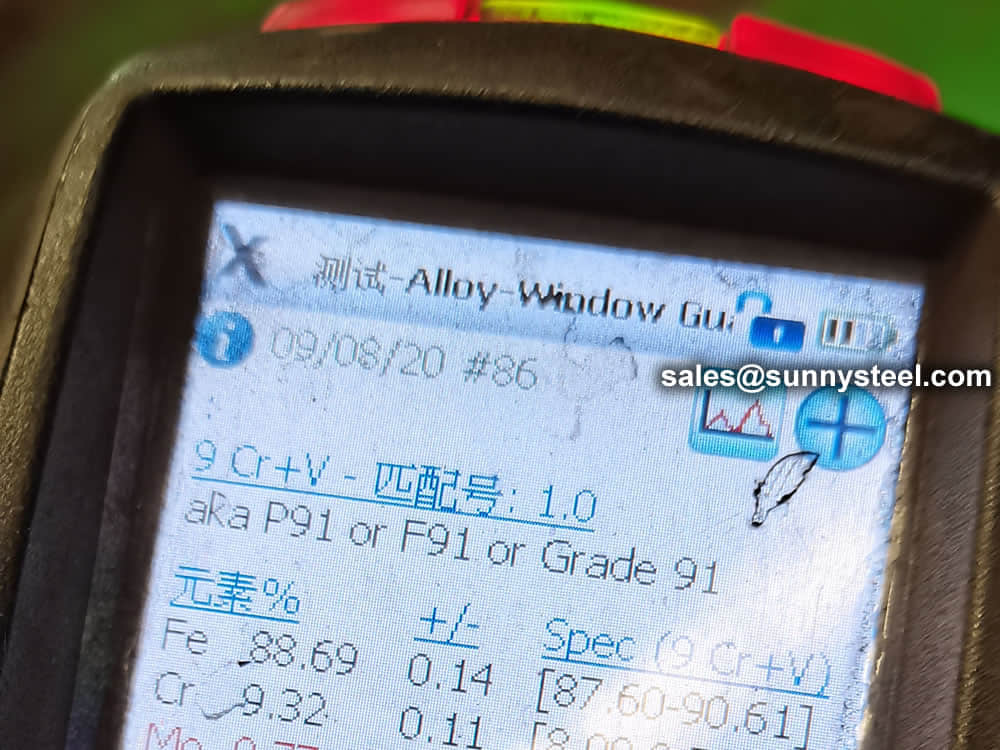
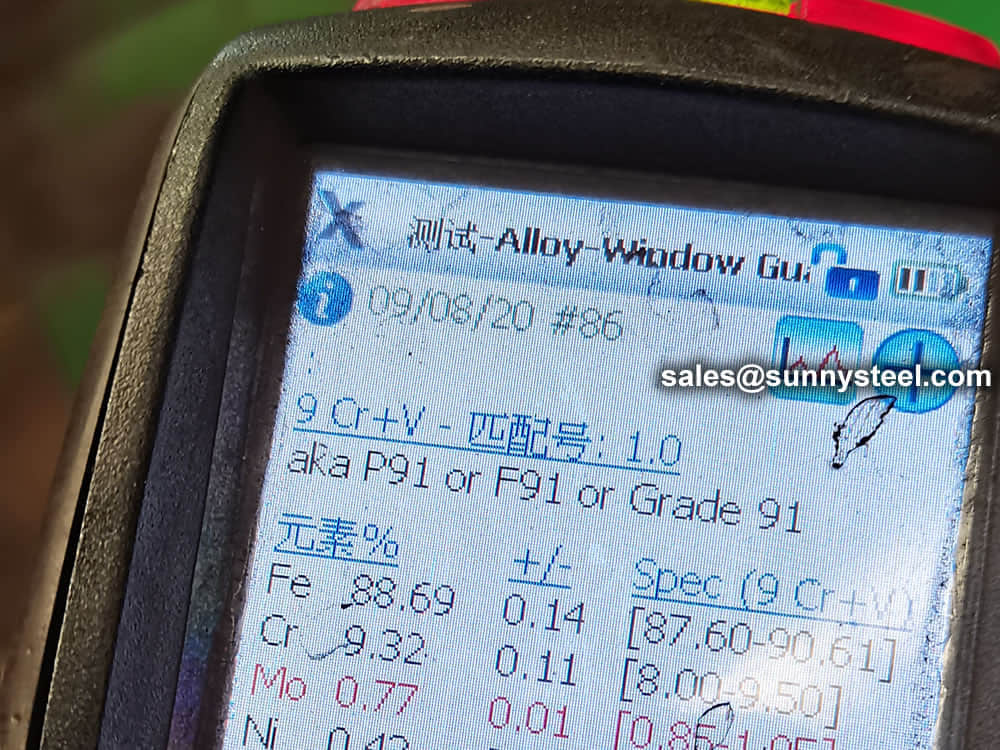
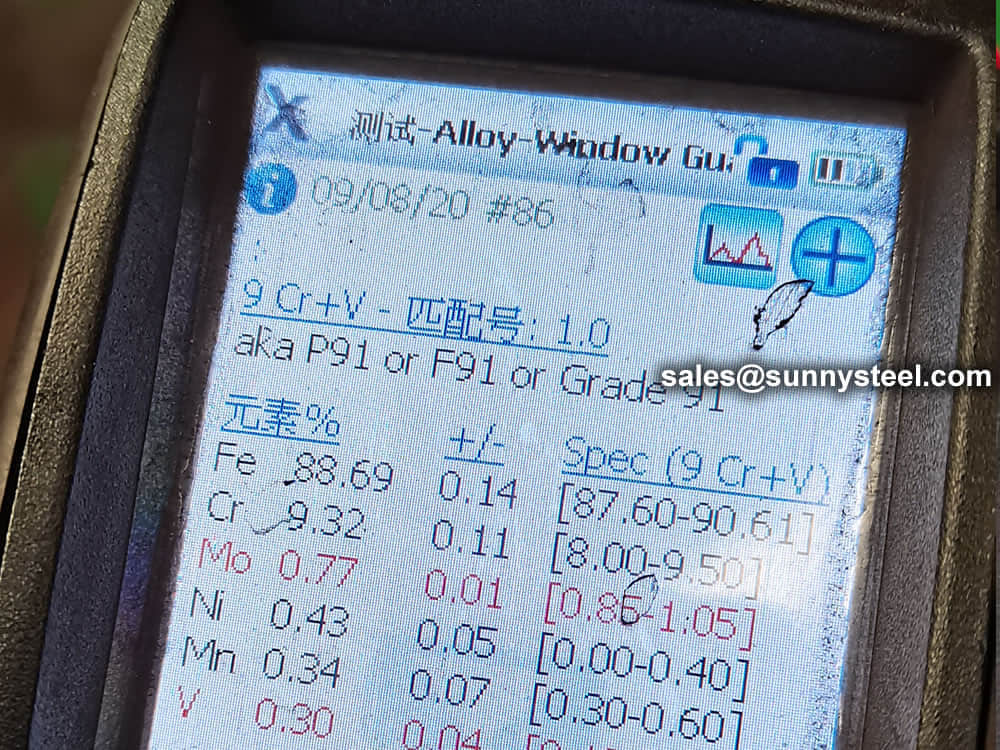

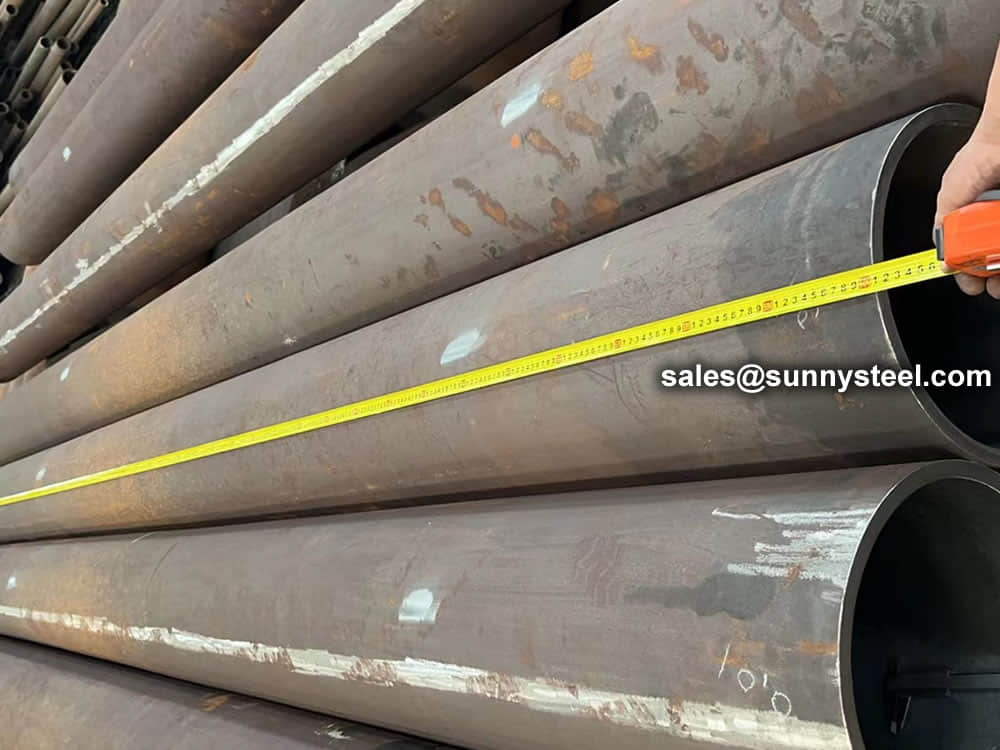
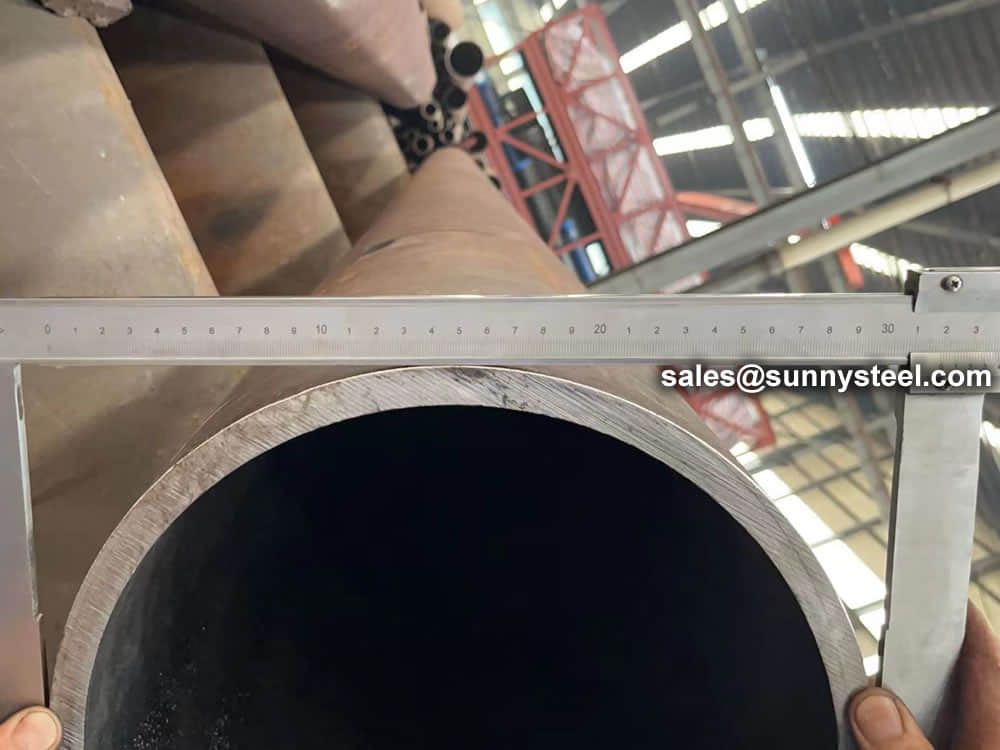
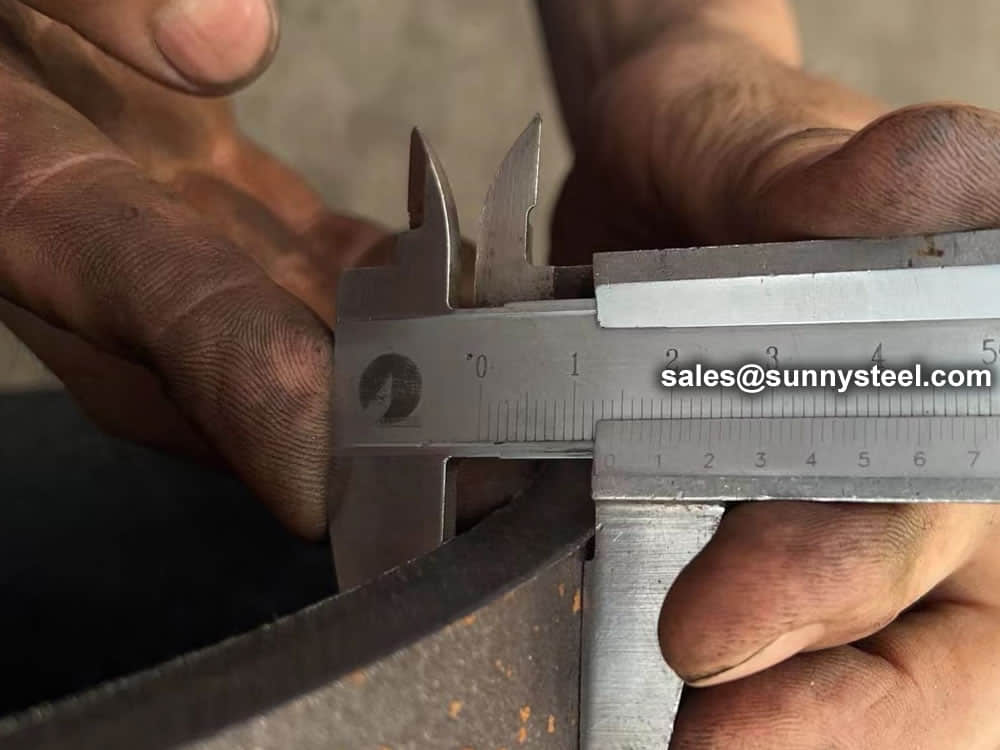
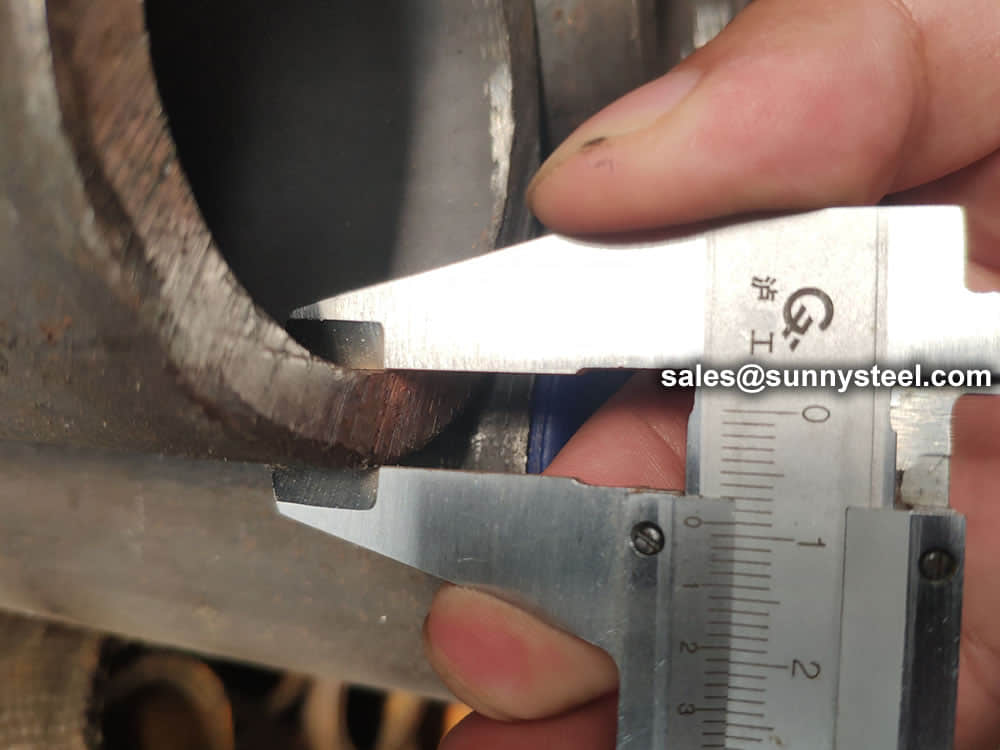
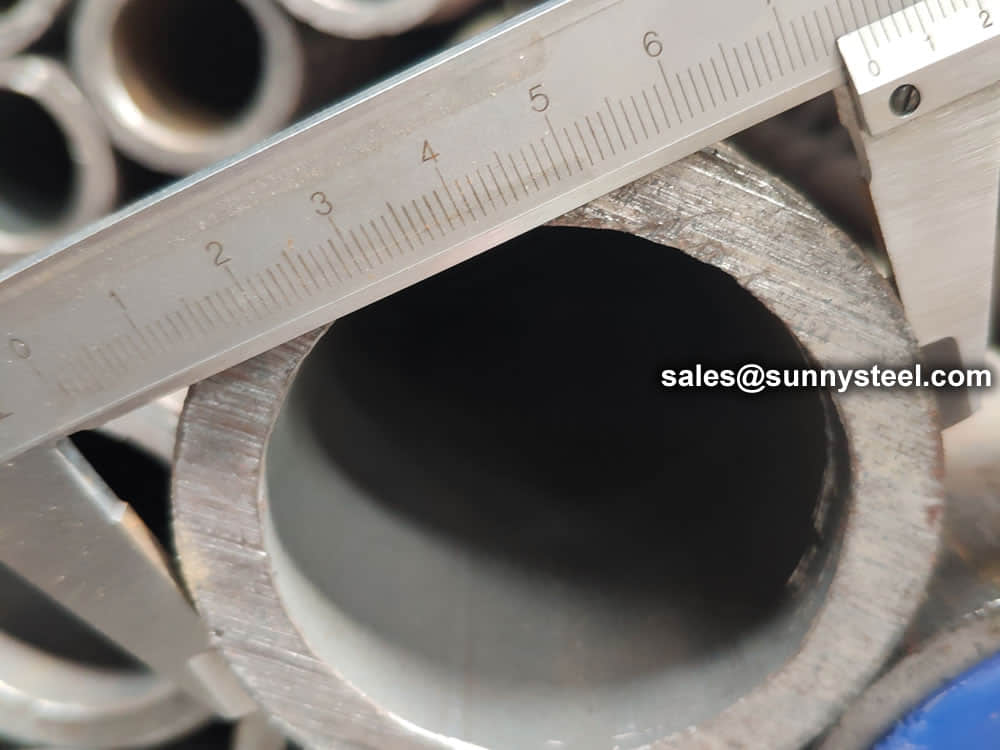
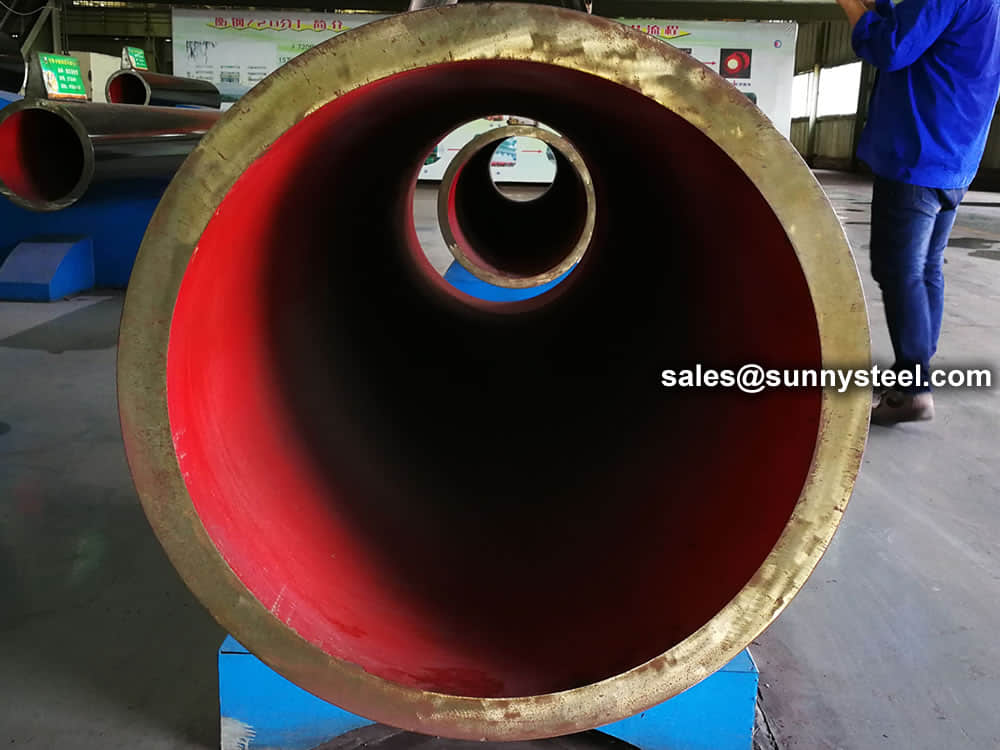
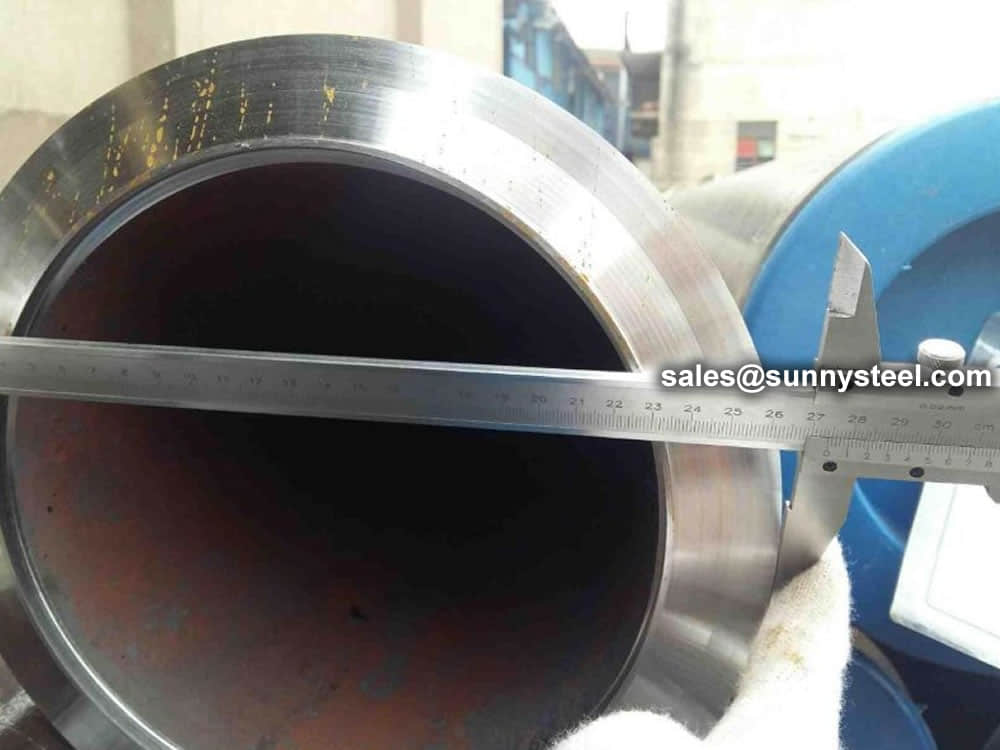
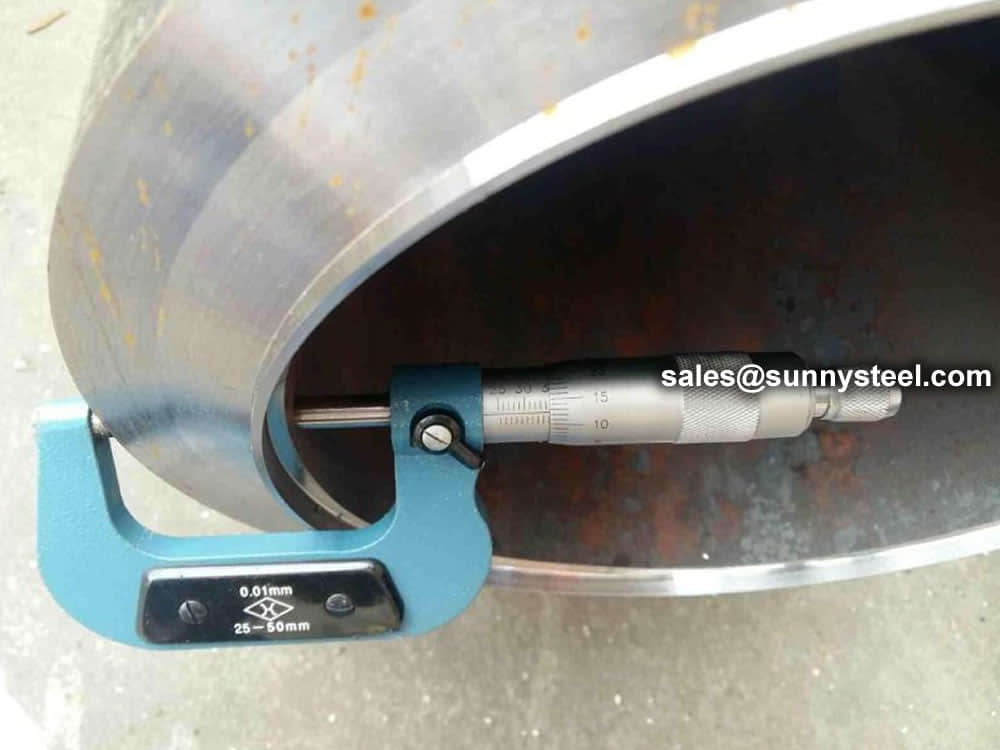
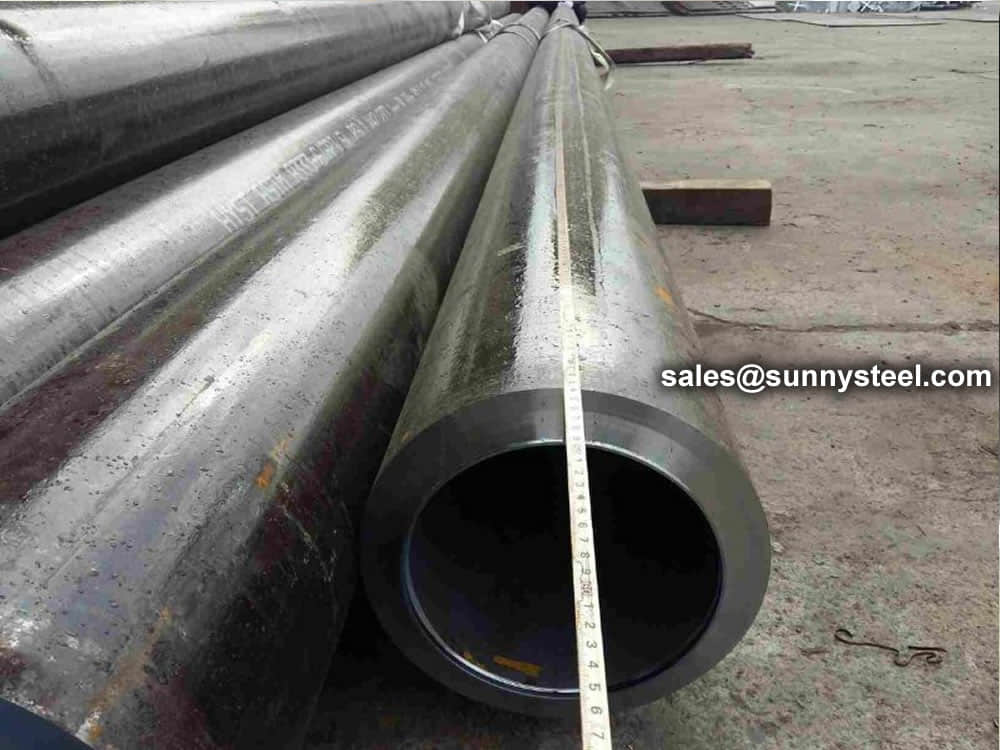
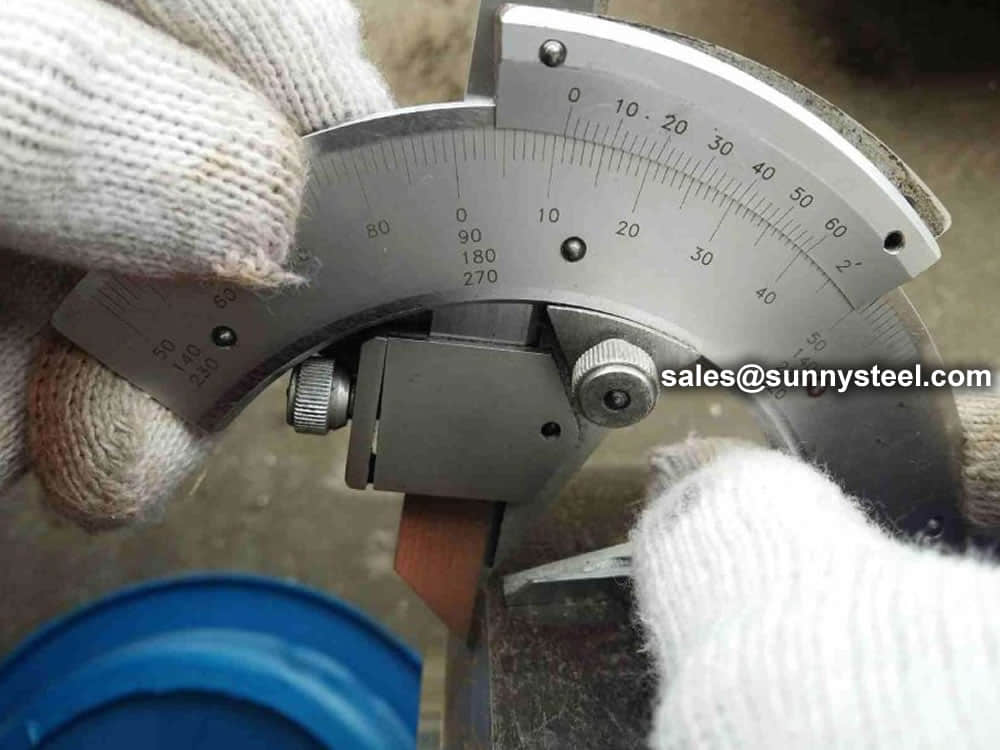
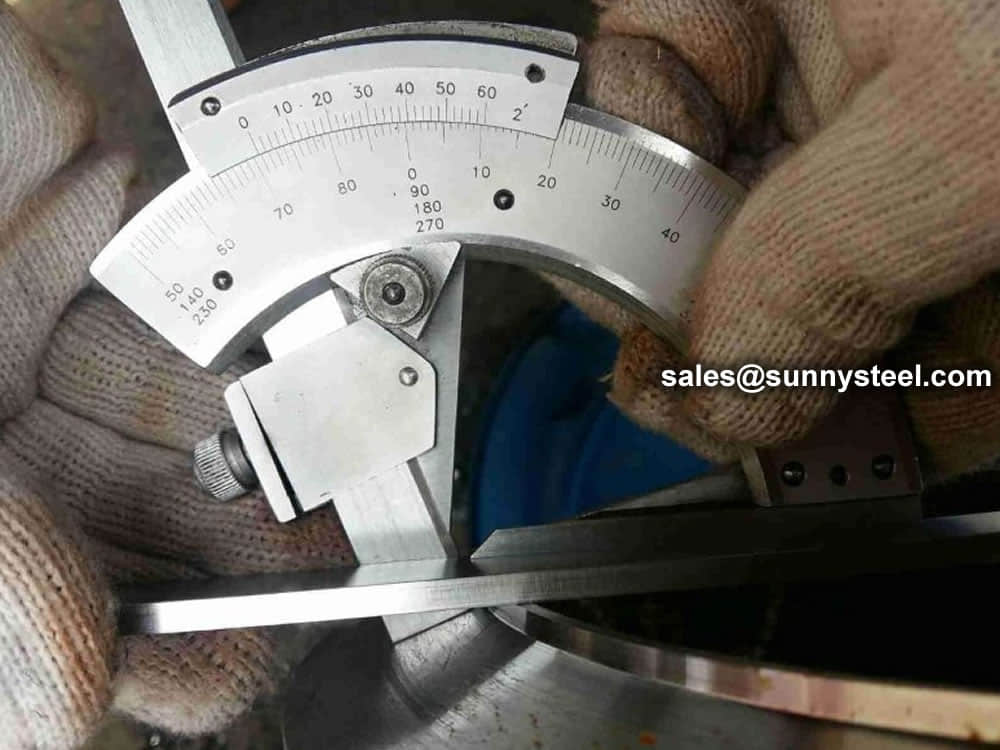
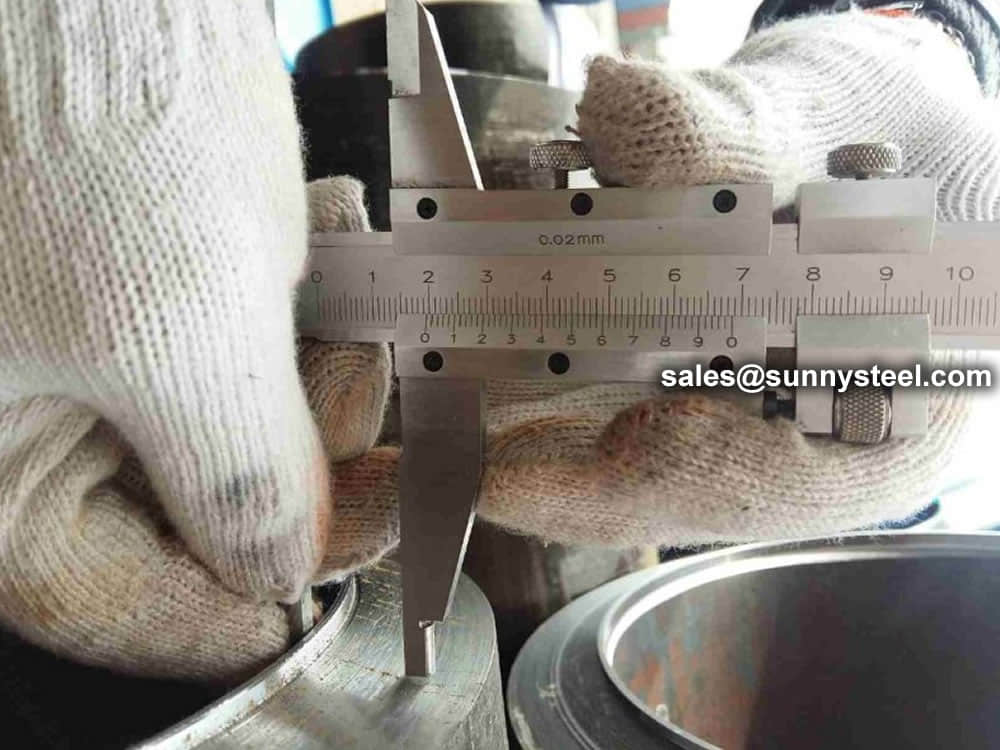
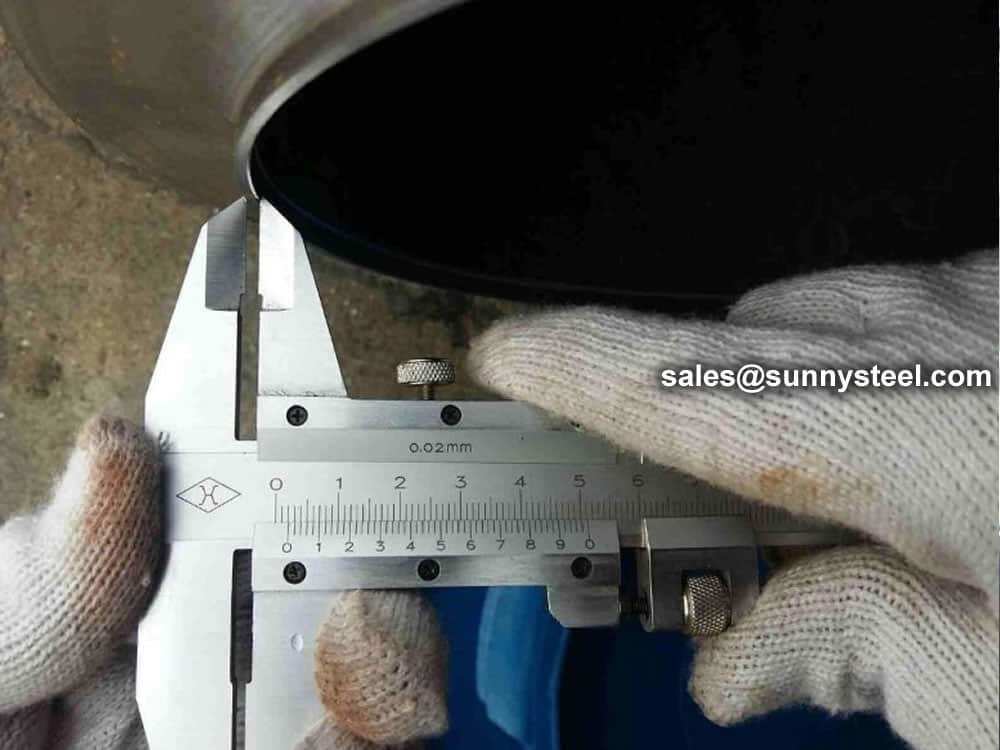
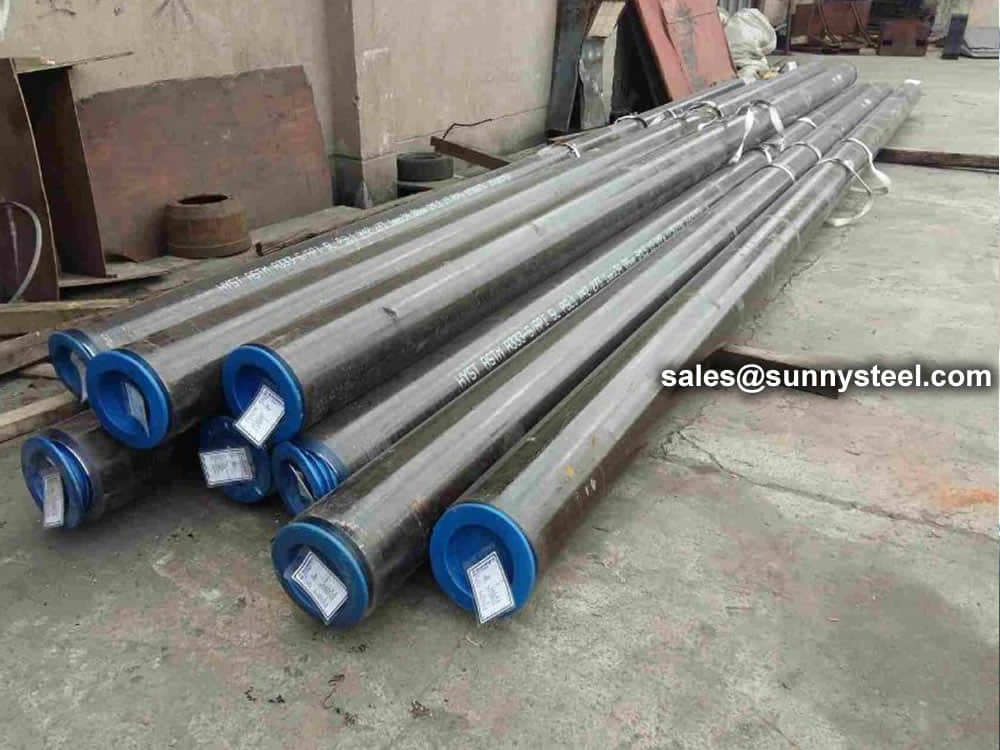
Steel pipe delivery status(condition): cold / hard (BK), cold / soft (BKW), after cold stress relief annealing (BKS), annealing (GBK), normalized (NBK).
| Term | Symbol | Explanation |
|---|---|---|
| Cold-finished/hard (cold-finished as-drawn) | BK | No heat treatment after the last cold-forming process. The tubes therefore have only low deformability. |
| Cold-finished/soft (lightly cold-worked) | BKW | After the last heat treatment there is a light finishing pass (cold drawing) With proper subsequent processing, the tube can be cold-formed (e.g. bent, expanded) within certain limits. |
| Annealed | GBK | After the final cold-forming process the tubes are annealed in a controlled atmosphere or under vacuum. |
| Normalized | NBK | The tubes are annealed above the upper transformation point in a controlled atmosphere or under vacuum. |
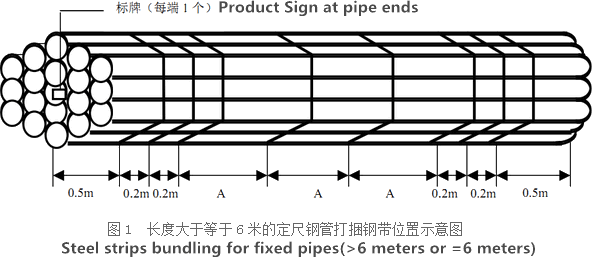
The general cold strip mills, volume should go through continuous annealing (CAPL unit) to eliminate cold hardening and rolling stress, or batch annealing reach the mechanical properties of the corresponding standard specifies. Cold rolled steel surface quality, appearance, dimensional accuracy better than hot-rolled plate, and right-rolled thin product thickness is about 0.18mm, so the majority of users favor.
Cold rolled steel coil substrate products deep processing of high value-added products. Such as electro-galvanized, hot dip galvanized, electro-galvanized fingerprint resistant, painted steel roll damping composite steel, PVC laminating steel plates, etc., so that the excellent quality of these products has a beautiful, high resistance to corrosion, has been widely used.
Cold rolled steel coil finishing after annealing, cut the head, tail, trimming, flattening, smooth, heavy volume, or longitudinal clipboard. Cold-rolled products are widely used in automobile manufacturing, household electrical appliances, instruments, switches, buildings, office furniture and other industries. Steel plate strapping package weight of 3 to 5 tons. Flat sub-volume typically 3 to 10 tons / volume. Coil diameter 6m.
Bare packing/bundle packing/crate packing/wooden protection at the both sides of tubes and suitably protected for sea-worthly delivery or as requested.
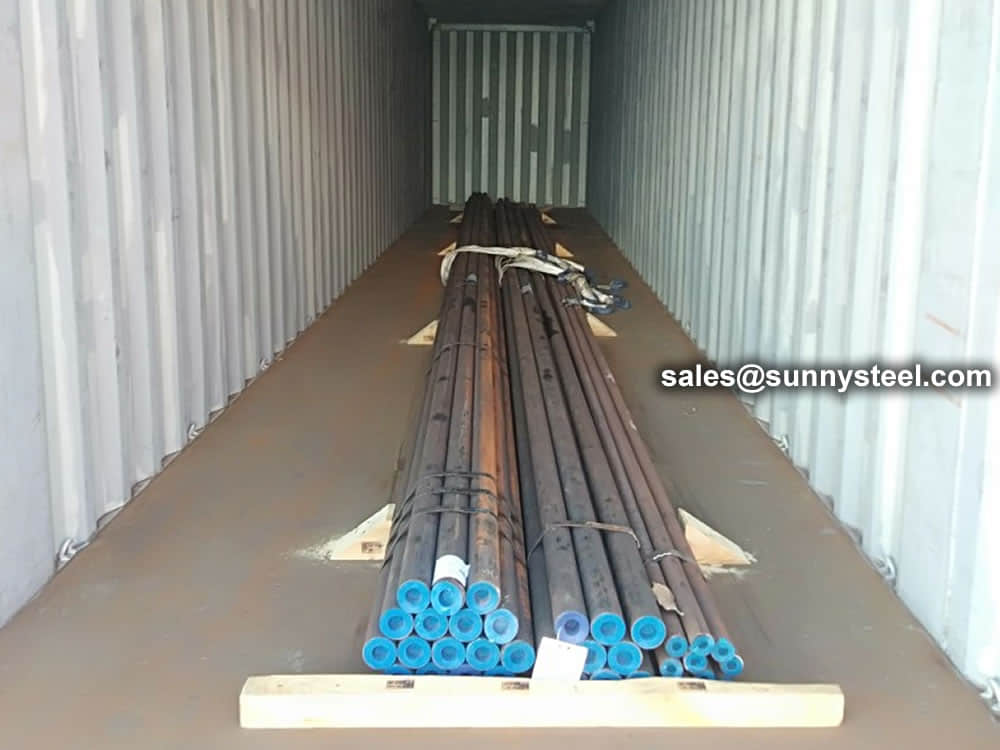
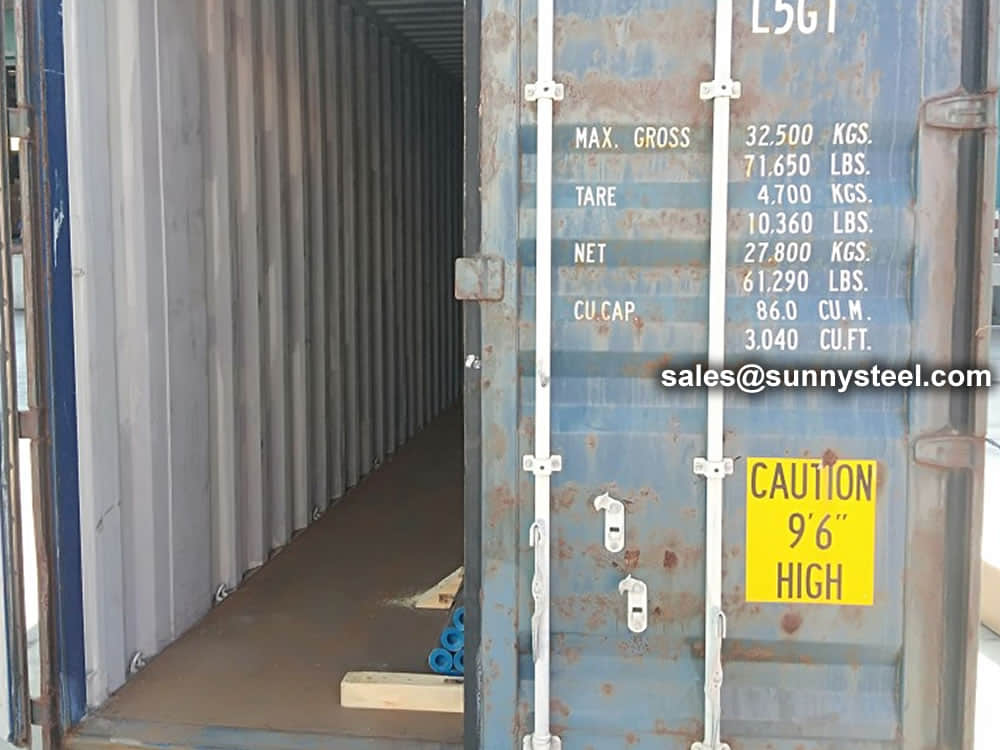
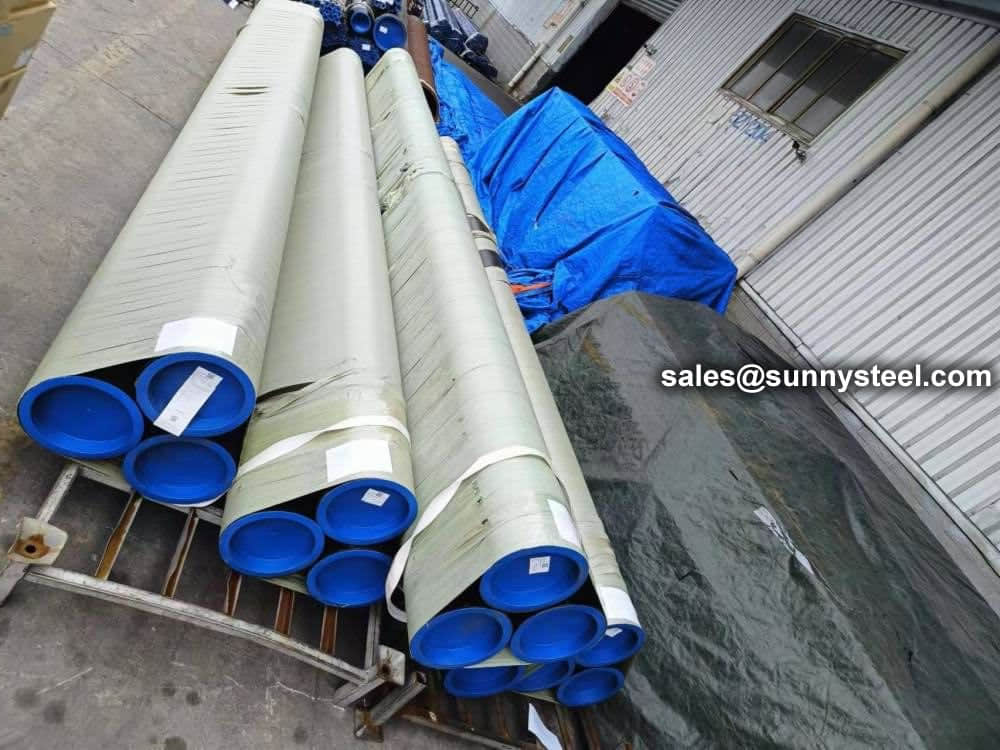
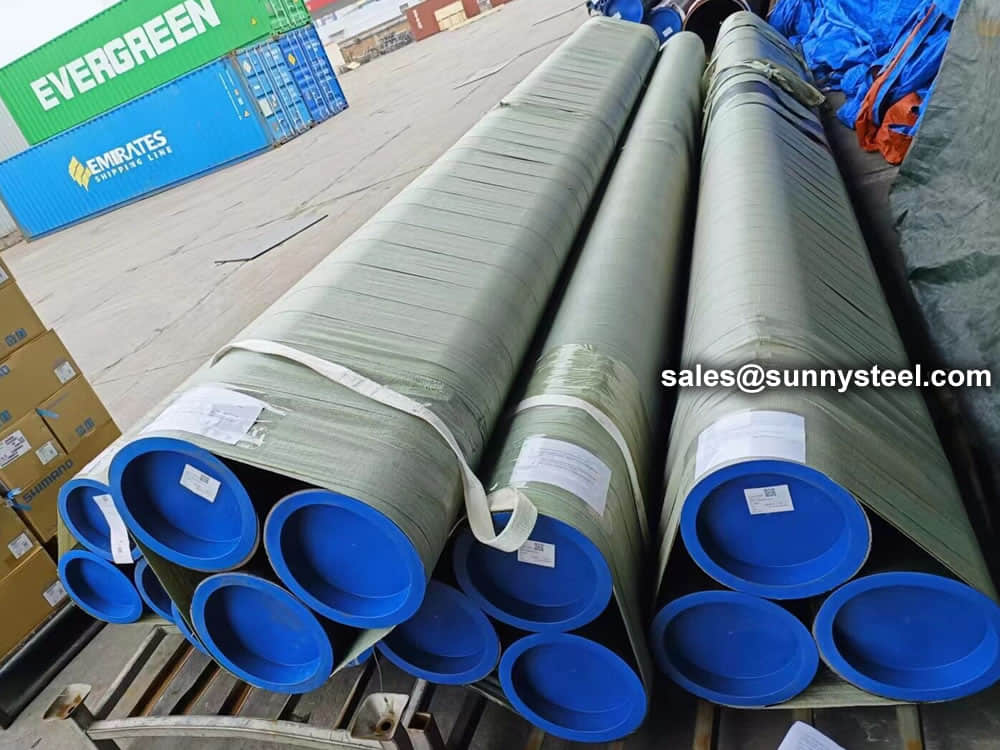
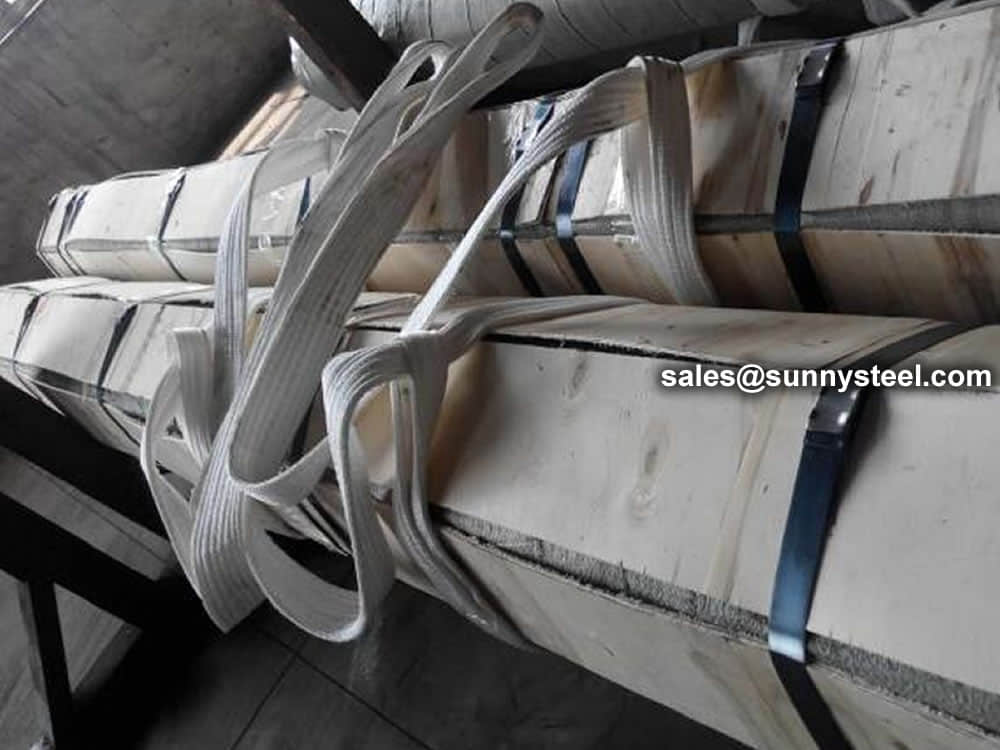
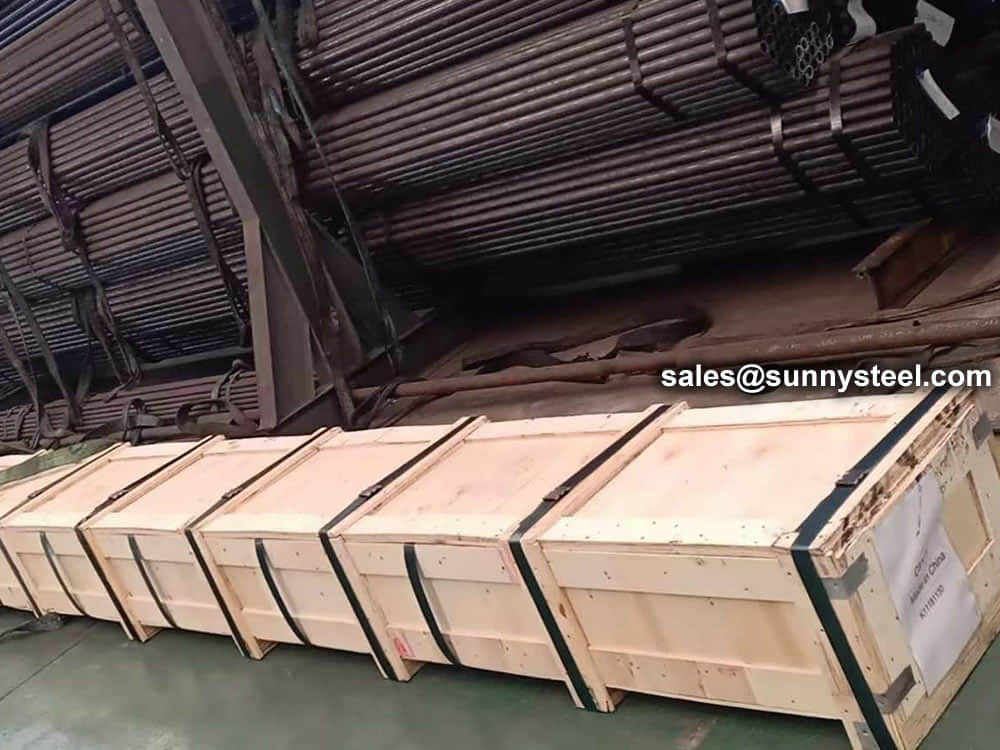
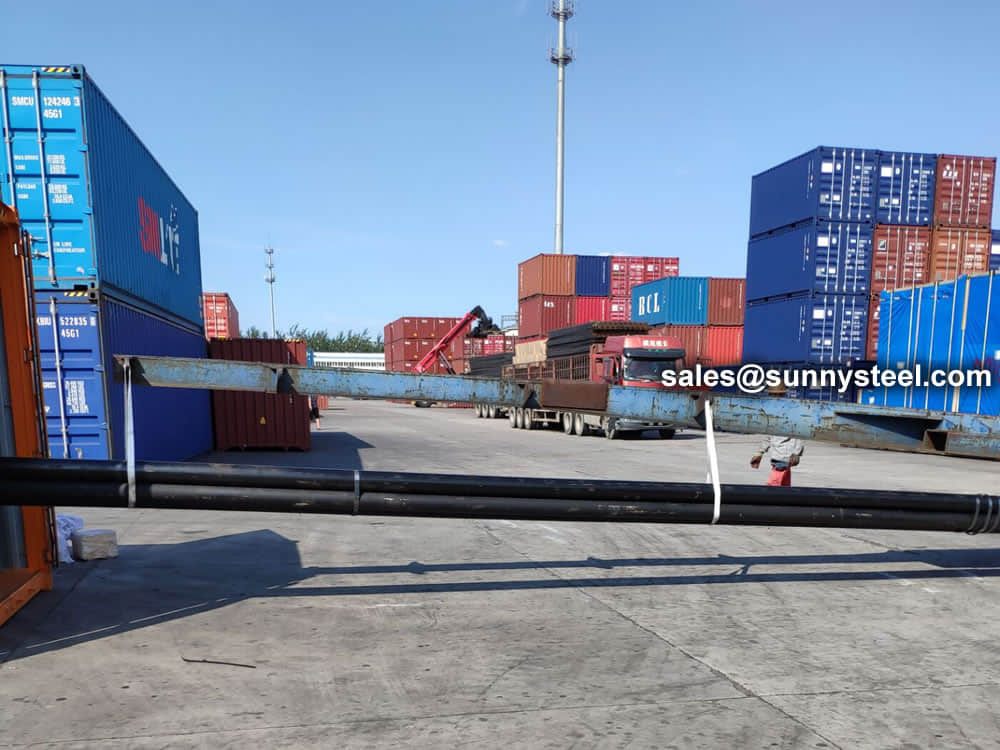
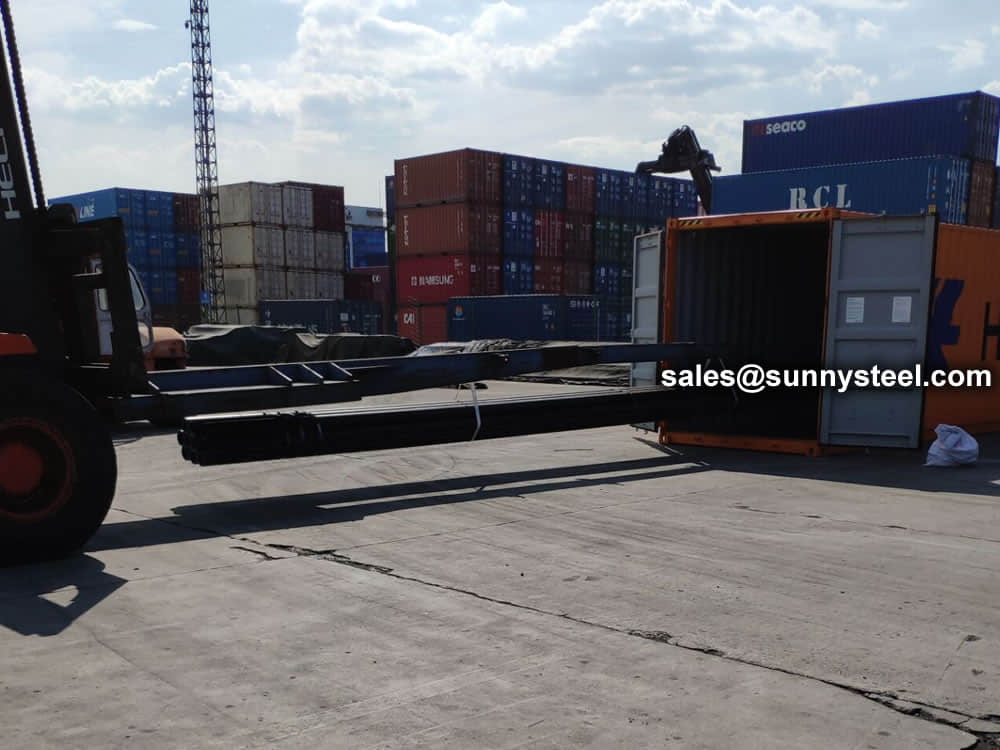
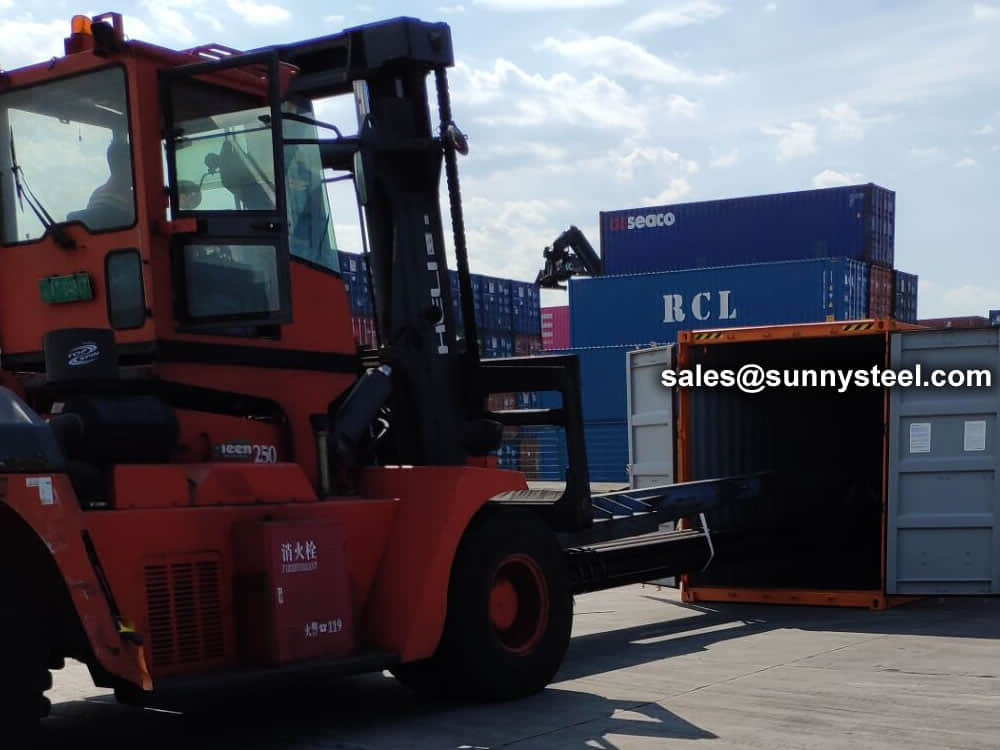
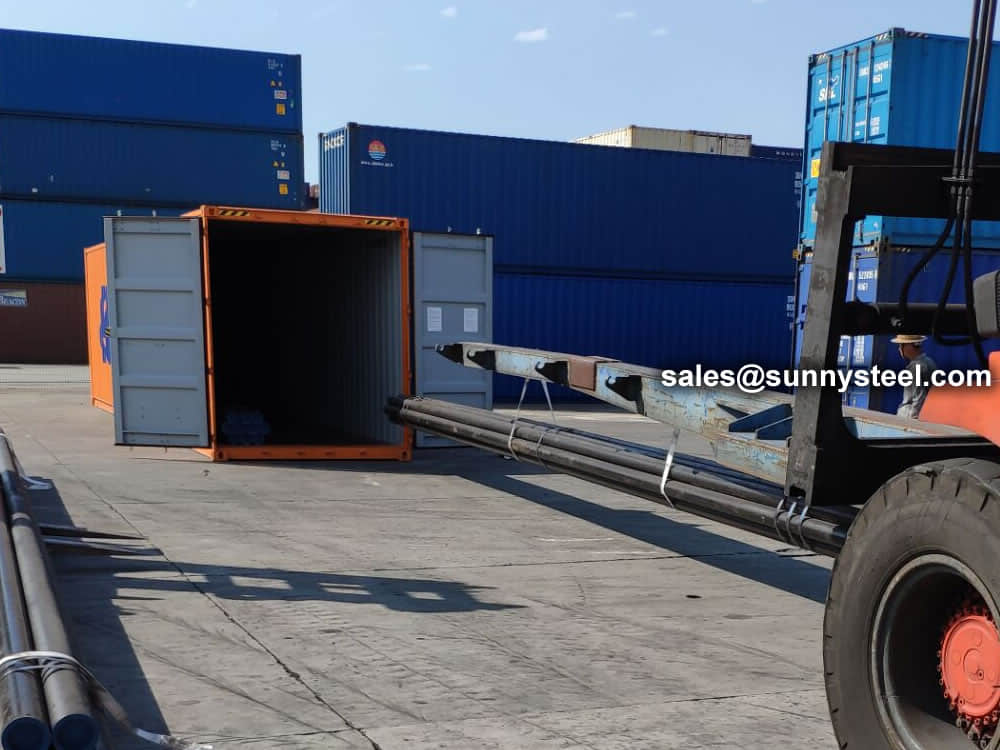
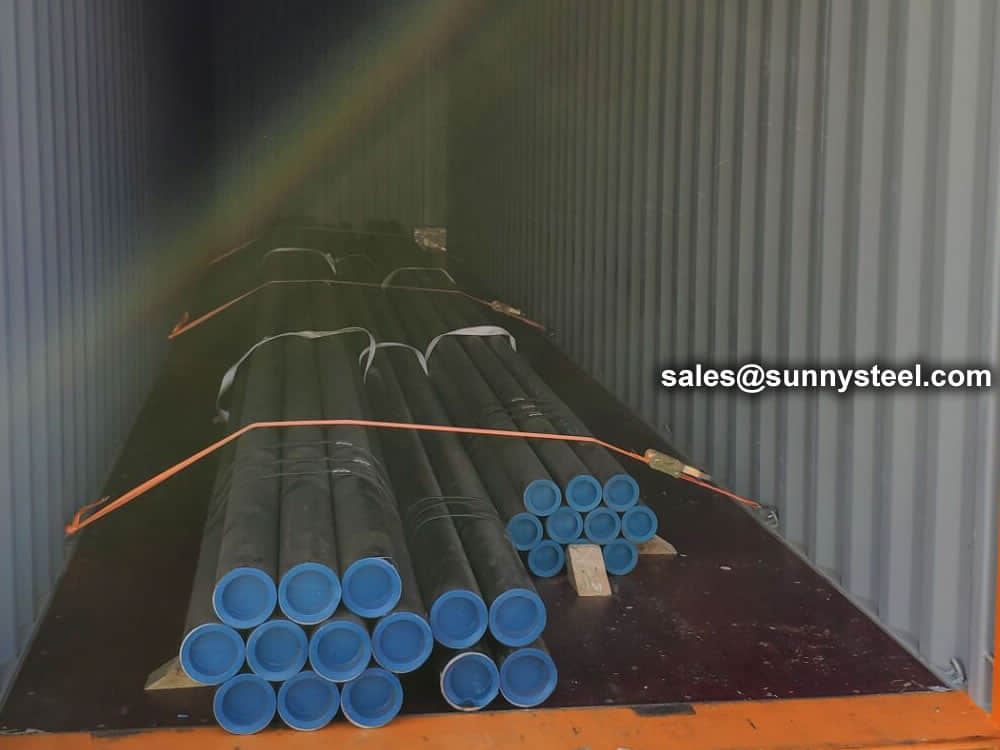
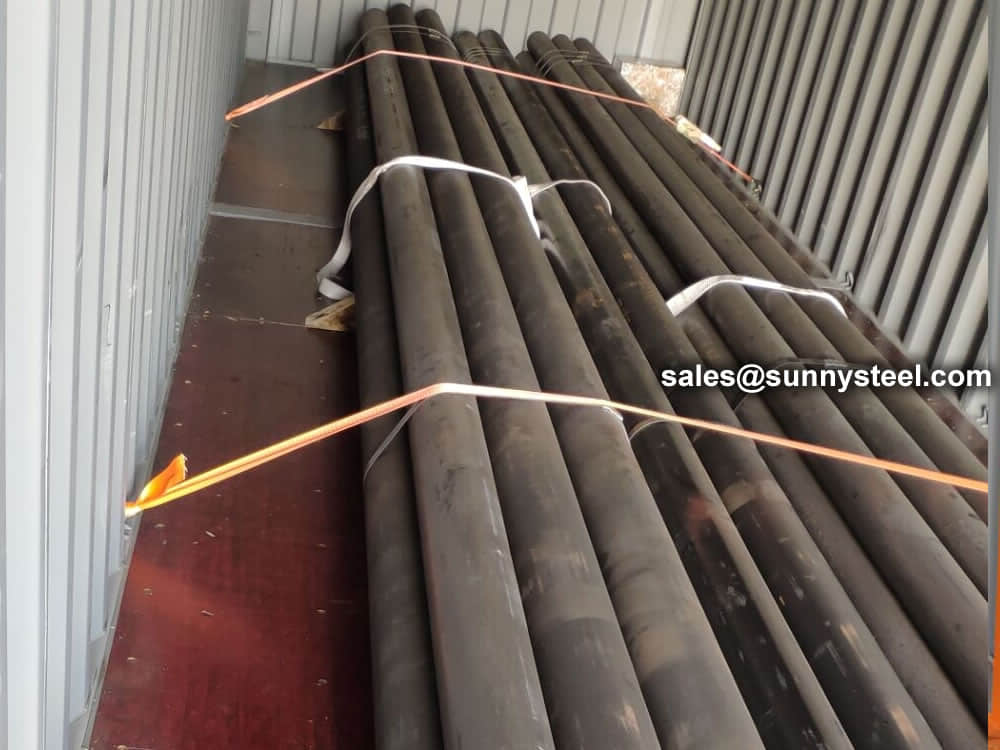
There are probably hundreds of different methods for packing a pipe, and most of them have merit, but there are two principles that are vital for any method to work prevent rusting and Sea transportation security.
Our packing can meet any needs of the customers.
Our team of experienced sales specialists proudly partners with gas and chemical processors, power generation plants, oil refineries, and related industries to offer piping components and value-added services.
Alloy steels are made by combining carbon steel with one or several alloying elements, such as manganese, silicon, nickel, titanium, copper, chromium and aluminum. These metals are added to produce specific properties that are not found in regular carbon steel. The elements are added in varying proportions (or combinations) making the material take on different aspects such as increased hardness, increased corrosion resistance, increased strength, improved formability (ductility); the weldability can also change.
Commonly used alloying elements and their effects are listed in the table given below.
| Alloying Elements | Effect on the Properties |
|---|---|
| Chromium | Increases Resistance to corrosion and oxidation. Increases hardenability and wear resistance. Increases high temperature strength. |
| Nickel | Increases hardenability. Improves toughness. Increases impact strength at low temperatures. |
| Molybdenum | Increases hardenability, high temperature hardness, and wear resistance. Enhances the effects of other alloying elements. Eliminate temper brittleness in steels. Increases high temperature strength. |
| Manganese | Increases hardenability. Combines with sulfur to reduce its adverse effects. |
| Vanadium | Increases hardenability, high temperature hardness, and wear resistance. Improves fatigue resistance. |
| Titanium | Strongest carbide former. Added to stainless steel to prevent precipitation of chromium carbide. |
| Silicon | Removes oxygen in steel making. Improves toughness. Increases hardness ability |
| Boron | Increases hardenability. Produces fine grain size. |
| Aluminum | Forms nitride in nitriding steels. Produces fine grain size in casting. Removes oxygen in steel melting. |
| Cobalt | Increases heat and wear resistance. |
| Tungsten | Increases hardness at elevated temperatures. Refines grain size. |

When you partner with Sunny Steel, you can stop worrying about meeting deadlines thanks to our responsive and timely service. You'll also say goodbye to unnecessary shopping around. Instead, you'll get white glove service from an expert who understands your needs and can get you the materials you need quickly.
